I don’t know about you, but when we visit someplace new we are the opposite of slow travelers. We like to see as much as we can and make the most of our time there.
Visiting Paris was no different. We weren’t sure when we would make it back so we wanted to devour as much of the city as possible!
We packed a lot into four days and I’m sharing our itinerary if you’re an ambitious traveler like we are!
*Updated January 2025
*Disclaimer: This post contains affiliate links. If you make a purchase or book a reservation through the link provided then we receive a small commission at no extra cost to you. We really appreciate your support!
How to Spend Four Days in Paris
Table of Contents
- Day 1: Walking Tour of Montmartre
- Day 2: Explore Le Marais, Ile de la Cite, and the Left Bank
- Day 3: Visit The Louvre, Eiffel Tower, Arc de Triomphe, and Other Nearby Attractions
- Day 4: A few more recommendations if you have time
I know it seems like a lot to pack in, but keep in mind that many of these locations are places to walk by en route to different destinations and don’t require a lot of time to visit.
The itinerary includes locations that are grouped in the same area so that it is easy to explore by foot.
Click HERE for a map of all the destinations.
Day 1: Walking Tour of Montmartre
Our flight landed in the afternoon and we hit the ground running. We knew the best way to overcome jet lag is to stay awake so that we could get a solid night’s sleep.
We headed to Montmartre, the perfect neighborhood to spend an afternoon exploring.
Montmartre is arguably the most charming and photogenic neighborhood in all of Paris.
The narrow winding cobblestone streets are rich in history and once home to the likes of Picasso, Van Gogh, Renoir, Degas, Matisse, and other influential characters.
You’ll want to start your walking tour of Montmartre at the Sacre Coeur Basilica. The stunning cathedral also offers the most beautiful views over the city.
After visiting the basilica, head out to one of the many charming cafes, cozy museums, and historic landmarks.
For more recommendations and information, see our guide 12 Spots Not to Miss in Montmartre.
Day 2: Explore Le Marais, Ile de la Cite, and the Left Bank
Le Marais
Start your day at the trendy neighborhood of Le Marais. This colorful district is spread across the 3rd and 4th arrondissements on the Right Bank, just north of the Seine River.
This area is steeped in history and is one of the only areas in Paris that was untouched during Haussmann’s reconstruction of Paris in the 1800s.
The cobblestone streets and historic architecture make it a unique gem in the City of Lights.
Marais has long been an enclave for the Jewish community and was the center of suffering during the dark days of WWII.
Today the streets are dotted with Kosher bakeries, Jewish bookstores, specialty shops, falafel stands, and beautiful synagogues.
Over the years, Le Marais has also become a hub for the LGBT community with splashes of brightly colored rainbow crosswalks and flags hanging in windows.
This eclectic and fashionable district is home to museums, galleries, lively restaurants, cafes, and historic landmarks.
The house of Nicolas Flamel can also be found in Marais. Nicolas Flamel was in fact a real person and not just a character contrived in the Harry Potter series.
Flamel was a well-known French scribe and wealthy member of the Parisian bourgeoisie.
After his death, it was rumored that Flamel had discovered the philosopher’s stone and there were legendary accounts that he had achieved immortality.
In 1407 he commissioned a home to be built and it still stands today as the oldest stone house in Paris. You can find the house and ground floor restaurant at 51 Rue de Montmorency.
The Hotel de Ville is also located in Le Marais and serves as Paris’ Town Hall. The interior of the town hall is closed to the public, but the exterior square is found bustling with people.
For years, the square has been adorned with a vintage carousel, one of the twenty carousels found around the city.
However, an elaborate urban forest is being constructed in the courtyard and is scheduled to open in June 2025.
Ile de la Cite
From Hotel de Ville, cross over the Seine River and explore Ile de la Cite, or “Island of the City”. This is one of the two remaining natural islands in the Seine and is where medieval Paris was founded.
Notre Dame
Here you will find the prestigious cathedral of Notre Dame.
The devastating fire in April 2019 destroyed much of the historic church, however, after nearly 5 years of reconstruction the church is opend once again to visitors.
Tip: Our favorite creperie, Creperie du Cloitre, can be found directly north of the cathedral in the shadow of Notre Dame. All crepes are not created equally, and these crepes were our favorite in the city!
Cafe Au Vieux Paris
There are also a number of cute cafes scattered around the island, like Café Au Vieux Paris. This cafe is an Instagram favorite, particularly in the springtime when it is draped in wisteria.
The cafe can be found on Rue Chanoinesse, a medieval street that was once home to an order of monks.
Tip: Just to the left of the cafe behind a maroon door at 26 Rue Chanoinesse, you’ll find the Gravestone Courtyard. The paving stones in this courtyard are made from old gravestones that still contain engravings.
Sainte Chapelle
Next, head over to the Sainte Chapelle. This exquisite Gothic church is one of my favorites in all of Europe.
Over 1,100 opulent stained glass window panes surround the chapel. The panes are arranged across 15 towering windows and depict scenes from the Old and New Testament.
The chapel was originally built to house precious Christian relics, including Christ’s crown of thorns (which was later moved to Notre Dame).
There is a small chapel on the main floor, from which visitors will then ascend up a narrow spiral staircase to reach the main chapel.
The best time to visit is first thing in the morning or an hour before sunset when the light filters through the windows.
Sainte Chapelle is located within the same complex as the Conciergerie. Both sites can be visited with a combo ticket priced at 15 euros.
The Conciergerie
The Conciergerie is an impressive former Gothic palace situated on the banks of the Seine.
During the French Revolution, the Conciergerie was used as a prison. This is where Marie Antoinette spent her final days in captivity before being executed.
Visitors can view her cell, which has been transformed into a small chapel and shrine.
Today the Conciergerie boasts the largest Gothic Hall in all of Europe and serves as a museum with fascinating displays.
The informational plaques give an insightful look into what life was like inside these walls.
For instance, prisoners had to finance their own detention. This means that the poor were forced to cram into small dark cells while the wealthy reclined in comfort and even hired artists to paint their last portrait.
During the height of the Revolution, there were as many as 500 prisoners held at a time.
The Conciergerie was never a place of execution, but the carts would depart from here to transport the prisoners to the execution site at Place de la Concorde (located adjacent to the Tuileries Garden).
Before their departure, prisoners would visit the Grooming Room where they would have their hair cut in order to allow clear passage of the guillotine blade. Today guests can view a reconstruction of this room.
The museum is very well done with free maps for a self-guided tour and the option to purchase an audio tour.
As you head out of the Conciergerie, turn left and you can find the oldest clock in Paris.
Pont Neuf Bridge
Paris has 37 bridges that cross the Seine River. Two notable bridges near Ile de la Cite are Pont Neuf and Pont des Arts.
Pont Neuf is the oldest existing bridge in Paris. The bridge is lined with sculptures and stone masks. You’ll also find a bronze statue of Henry IV on horseback.
Pont des Arts Bridge
The Pont des Arts Bridge was the original “Bridge of Locks” in Paris. Lovers would write their names on a lock then attach it to the railing and throw the key in the river to seal their love forever.
The railings became too heavy and collapsed under the weight of all the locks. The railings have since been replaced with glass panels.
The tourists just can’t seem to let the tradition go, though, and have since begun attaching locks to the posts.
Cross over the bridge and begin exploring the Left Bank of the Seine River.
Left Bank of the Seine
Saint-Germain-des-Pres
The chic neighborhood of Saint-Germain-des-Prés is filled with upscale shopping, classic Parisian cafes, and elegant dining.
Grab a table at the trendy Cafe de Flore or neighboring Les Deux Magots. These cafes were often frequented by the likes of Picasso and Hemingway.
Paris’ oldest church can also be found in Saint Germain, the 11th century Église de Saint-Germain-des-Prés.
The ever photogenic Laduree Bakery is also found here, there are 10 locations around Paris.
Tip: Cafe de Flore is known for serving the best hot chocolate in Paris. Each order comes with a small pitcher of milk and melted chocolate that you mix together in a mug.
Eglise Saint Sulpice
Saint Sulpice stands as the second largest cathedral in Paris, second only to Notre Dame. Construction took place between 1646 to 1745 and took nearly a century to complete.
The church gained notoriety after being featured in Dan Brown’s The Da Vinci Code. However, it still remains a quiet respite away from the crowds.
The church is free to visit, and while you’re there be sure to notice the large gnomon (the part of a sundial that casts a shadow) and the brass line on the floor.
This was designed to mark the exact time of Easter, along with other astronomical events. This was referred to as the fictional “Rose Line” in The Da Vinci Code.
On the exterior, you’ll notice that the two distinctive towers are not quite identical. The one on the right was never completed and remains hollow inside.
Tip: The church’s renowned organ is one of the finest and largest in the world. Free organ recitals are held every Sunday afternoon.
Luxembourg Gardens
The Luxembourg Palace was built for the Italian-born queen, Marie de Medici, and is patterned after the Medici Palace, Palazzo Pitti, in Florence.
The palace is surrounded by a 56-acre garden with sprawling lawns, blooming flower beds, more than 100 statues, and the sparkling Medici Fountain.
Tip: If you go to the southwest area of the garden near the entrance off of Rue de Fleuris, you can find a beekeeping school with dozens of bee box hives. The beehives have been a fixture in the gardens since the 19th century.
Pantheon
The Pantheon is a revered mausoleum found in Paris’ Latin Quarter. Over the years, the austere structure has served both as a religious and patriotic monument.
There are historical displays and informational plaques throughout the Pantheon, but my favorite part is the extensive crypt that can be found on the lower level.
The crypt serves as the final resting place for many of France’s most influential citizens. This includes, among others, Voltaire, Rousseau, Victor Hugo, Marie Curie, and Emile Zola.
The narrow corridors are lined with tombs that are well marked. Outside the tombs you will find a digital screen noting who is laid to rest there along with a brief synopsis of their life.
There is also a digital map at the entrance categorized in alphabetical order to easier assist in helping visitors locate a tomb.
The Pantheon Dome Climb is also a popular tourist attraction and offers unrivaled views over Paris. There is an entrance fee to visit the Pantheon and an additional charge to climb the dome. Youth 17 years and younger are free, and free entry is offered during the offseason on the first Sunday of the month.
As an interesting side note, the Paris Pantheon is where astronomer Jean Bernard Leon Foucault carried out his pendulum experiment that proved that the world spins on an axis.
Sorbonne University
Sorbonne University is another notable landmark in the Latin Quarter. It was founded in 1150 and holds claim as the second oldest university in Europe and one of the oldest in the world.
Access to the central courtyard is for students only, but you can admire the exterior and sneak a peak in through the gates.
Shakespeare and Company Bookstore
Shakespeare and Co. Bookstore has a reputation for being the most famous bookstore in Paris. The first Shakespeare and Co. was opened in 1919, but unfortunately closed during WWII and never reopened.
The current English language bookshop was founded in 1951 by American George Whitman.
When it first opened its doors, writers, artists, and intellectuals were welcomed to stay at the bookshop and sleep in the aisles among the books.
In exchange for a place to stay, guests were asked to read a book a day, volunteer to help in the shop for a few hours each day, and write a one-page autobiography.
Over 30,000 well-known and aspiring writers have stayed at the bookshop, creating an impressive archive of autobiographies and stories.
No photos are allowed inside, but you’ll find a quaint library upstairs where you can cozy up with a book.
There is also a small cafe next door if you prefer a cup of coffee while you read.
Tip: Square René Viviani is located adjacent to the bookshop. This beautiful public square was built on a former cemetery and is home to the oldest tree in Paris. Across the street from the square, you’ll also find a photogenic pink apartment building at 5 Rue Lagrange.
Odette Cafe
The Odette is the epitome of an adorable French cafe.
It is situated on an enchanting cobblestone street that feels as if it belongs on the set of a movie.
The cafe is known for its choux pastry, a French cream puff. They come in a variety of flavors that you can take to go.
However, for the full experience, I would recommend ordering a cup of coffee or hot chocolate and being seated in one of the tiny rooms.
A winding narrow spiral staircase leads up to three levels with an intimate dining area on each level. It is utterly charming and you’ll feel like you’re in a dollhouse!
Day 3: Visit The Louvre, Eiffel Tower, Arc de Triomphe, and Other Nearby Attractions
Tips For Visiting The Louvre and Nearby Attractions
Louvre Museum
The Louvre is the world’s largest art museum and the most visited museum in the world.
Construction began in the late 12th century as the Louvre Castle. Evidence of the original fortress can be found in the museum’s basement and crypt.
The Louvre later served as the French monarchy’s royal palace beginning in 1546 until they took up residence at the Palace of Versailles.
Visiting the Louvre can easily take an entire day. The museum spans almost 2 miles with over 650,000 square feet and 38,000 works of art. The most famous work of art is Leonardo da Vinci’s Mona Lisa.
There is always a crowd around the painting, but you’ll have a better chance of seeing her up close if you go first thing in the morning or later in the evening.
If you are planning to see Paris in only 4 days, you may opt just to visit the iconic glass pyramids outside the museum.
The museum is free for everyone on the first Saturday evening of the month from 6 pm to 9:45 pm, and every Friday evening from 6 pm to 9:45 pm for anyone under 26 years old.
If you plan it right, you can pop in for a quick evening tour at no charge.
Palais Royale
The Palais Royale is the former royal palace of Cardinal Richelieu and was later the childhood home of Louis XIV.
The interior is closed to the public, however, tourists are drawn to the unique outdoor art installation.
The Les Colonnes de Buren by artist Daniel Buren is a collection of 260 black and white striped columns of various heights that have been strategically lined up in the courtyard of the palace.
Be sure to visit the palace gardens, Jardin du Palais, adjacent to the palace as well.
Tuileries Gardens
The Tuileries Gardens offer the perfect spot to take a break from the city and crowds. The sprawling gardens come alive in the warmer months with colorful blooms and locals enjoying picnics and leisurely runs.
The gardens were originally commissioned by Catherine de’ Medici when she was living in the Louvre.
It was designed to reflect an Italian Renaissance garden with fountains, a labyrinth, a grotto, kitchen gardens, and vineyards.
Along with the expertly manicured gardens, you’ll also find a large collection of sculptures.
The gardens were made public after the French Revolution and is where the citizens of Paris gathered to celebrate.
Place de la Concorde
The Place de la Concorde is also located at the west end of the gardens.
In the square, you’ll notice a large granite Obelisk. It is one of two ancient Egyptian obelisks that once stood on either side of the Luxor Temple doors during the reign of Ramesses II.
The second obelisk still remains in Egypt. If you look closely, you’ll see hieroglyphic inscriptions in honor of the pharaoh.
This large square is also where many executions took place during the Revolution, including that of King Louis XVI and Marie Antoinette.
This also marks the beginning of the famed Paris street, Champs-Elysees.
Musee d’Orsay
The Musee d’Orsay is my favorite museum in Paris. The museum is housed in a former railway station with stunning Beaux-Arts architecture.
I was smitten with the massive station clock in the main hall, and equally in love with the oversize window clocks.
The window clocks are located on the 5th floor of the museum with one in the restaurant and the other just outside the restaurant.
Not only does the clock make for a perfect photo, but the view out the window across the Paris rooftops is spectacular.
The museum also houses the largest collection of impressionist and post-impressionist artwork in the world. You’ll find masterpieces by Monet, Degas, Renoir, Cezanne, Seurat, Van Gogh, and many more.
Tip: Admission to the Musee d’Orsay is free on the first Sunday of the month. Check here for a list of all the free museums and monuments.
Tips for visiting the Eiffel Tower and nearby attractions
Rue Cler
As you make your way from Musee d’Orsay to Rue Cler, take a slight detour to admire the majestic Pont Alexandre III bridge.
This famed Beaux-Arts style bridge is lined with sculptures of Greek and Roman mythological nymphs and creatures.
This bridge has also made a few cameo appearances in movies such as Midnight in Paris and Anastasia.
The Grand Palais can also be found just across the bridge. This large exhibition hall and museum features a stunning domed glass roof, which just so happens to be the roof that Ethan Hunt parachutes onto in Mission Impossible: Fall Out.
In the winter, the open hall is magically transformed into one of the largest indoor ice skating rinks in the world. See our guide 15 Magical Places to Go During Christmas in Paris for more information and recommendations.
After that little detour, head over to the Rue Cler street market. This open-air market offers all the classic French fare.
The pedestrian-only original cobblestone street is lined with specialty shops, cafes, bakeries, delis, florists, restaurants, and street vendors.
Rue Cler is where the locals come to mingle and do their shopping.
It is also the perfect spot to gather some baguettes and fresh fruit to enjoy a picnic on the lawn at Champ de Mars while watching the Eiffel Tower light show.
Eiffel Tower
As you make your way to the Eiffel Tower, there are a few great spots to grab photos. We have them mapped out in our guide, 7 Spectacular Places to Take Photos of the Eiffel Tower.
The Eiffel Tower is the world’s most visited paid structure and attracts millions of visitors each year.
The tower was originally constructed as an entrance gate to the World’s Fair. Many Parisians disliked it because they felt it was too modern.
If visiting the top of the Eiffel Tower is at the top of your bucket list, be sure to purchase tickets in advance online. You’ll need to arrive 30 minutes before your time slot to get through security.
There are two options for visiting the tower, visitors can climb the 674 steps to the second level. Here you’ll find restaurants and shops.
To access the top of the tower, visitors will take an elevator to the summit. Here you’ll find an open-air and indoor viewing area, as well as a champagne bar and small museum. You can also catch a glimpse of Gustave Eiffel’s apartment while on the way up.
Place du Trocadero
Place du Trocadero is the most popular spot in Paris to take photos of the Eiffel Tower.
Trocadero Square is a sunny plaza located atop the bottom floor of the Palais de Chaillot and is flanked by two wings of the building.
Today the Palais de Chaillot houses several museums and the square offers uninterrupted views of the Eiffel Tower.
The crowning jewel of the Trocadero Gardens is the Fountain of Warsaw. The fountain puts on an impressive show with its 20 water cannons.
When the water is placid it provides the perfect glass reflection of the Eiffel Tower.
You’ll also find a vintage carousel located in the right corner of the garden that provides the perfect photo op.
Tips for visiting the Arc de Triomphe & Champs-Elysees
Arc de Triomphe
The Arc de Triomphe stands as an impressive monument honoring the victories of Napoleon Bonaparte.
The Tomb of the Unknown Soldier from WWI and the eternal flame can also be found on the street level under the arch.
The arc is found in the center of a massive roundabout at Place de Charles De Gaulle. Twelve different streets fan out from the roundabout.
Do not attempt to cross the road to access the arc, there is an underground tunnel that leads directly to the ticket booth.
Visitors can then climb 284 steps up a narrow spiral staircase to reach the rooftop viewing deck.
This is my favorite view of the city. If you are short on time, I would recommend skipping the Eiffel Tower climb and visiting the Arc de Triomphe viewing deck instead.
It reveals the whole of Paris, including the Eiffel Tower, whereas the view from the Eiffel Tower only includes the cityscape.
A small museum is also located within the Arc de Triomphe chronicling the history and construction.
The ticket line can be long, so we purchased Skip-the-line tickets to save time.
Avenue des Champs-Elysees
Avenue des Champs-Elysees is one of 12 streets fanning out from the Arc de Triomphe. It is arguably the most recognizable street in all of Paris, perhaps the world.
This 1.2 mile glitzy avenue was once an extension of the Tuileries Gardens.
Today it is comparable to New York’s 5th Avenue and is filled with high-end flagship stores, luxe boutiques, and fine dining, as well as global chain stores.
Laduree is a popular luxury bakery that is known for its signature macarons.
The shop found on Champs-Elysees is an Instagram hotspot. It is common to see a line out the door for their macarons and a photo-op.
However, there are other locations around the city that are less crowded.
Another fun fact, Champs-Elysees also marks the finish for the epic Tour de France cycling race.
Tip: Expect to pay a pretty penny for a box of 4 macarons at Laduree. If you are looking for macarons without breaking the bank, McDonald’s sells a box of 6 macarons for a fraction of the cost. If you’re looking to bring some home as a gift, Paul Bakery inside the Charles de Gaulle Airport sells a gift box of 12 macarons for a reasonable price.
Day 4: A few more recommendations if you have time
The last day is a chance to catch anything you may have missed. You might also consider taking a day trip to the Palace of Versailles.
If you still have time to see a few more sites, here are some recommendations.
Canal St. Martin
While the tourists are hanging out on the banks of the Seine, the locals head to Canal St Martin.
Napoleon created this canal in order to have a waterway connecting the Seine to northwest Paris.
Today, it is a vibrant hipster hangout with colorful street art and riverfront cafes. Take a river cruise down the canal, or enjoy a leisurely picnic on the grassy banks.
Tip: We grabbed artisan sandwiches from Fric Frac on the banks of Canal St. Martin and they were amazing!
Place des Vosges
Place des Vosges is the oldest planned square in Paris. It was once the Palace Royale and a residential square lined with aristocratic homes.
Notable residents included Cardinal Richelieu, Victor Hugo, and Anne of Austria.
Today visitors can tour Victor Hugo’s former home and free museum, Maison de Victor Hugo. Visitors can also enjoy the public green space and neighboring cafes.
Rue Cremieux
Rue Cremieux was once a hidden gem, but this colorful street has gained recognition in the Instagram world. It is now a popular photo spot reminiscent of London’s Portobello Street.
The cobblestone lane is lined with pastel colored row houses and is perhaps the most charming street in Paris.
The homes were constructed in 1865 but were not painted with sunny pops of colors until 1996.
If you do visit, keep in mind that this is a residential street. Be respectful and keep the noise to a minimum and do not take photos on the resident’s doorsteps.
This street is not in the typical tourist area, you will need to take the train to reach the neighborhood. The Gare de Lyon is the closest train station.
This beautiful historic station was built for the 1900 World Exposition. The onsite Le Train Bleu Restaurant has been serving guests since 1901 and is one of the most beautiful restaurants in Paris. Just be sure to make reservations far in advance!
Galleries Lafayette
The Galleries Lafayette shopping center offers one of the best panoramic views of Paris, and the best part is that it is free.
The 7th-floor rooftop terrace can be reached by escalator in the main department store.
As you look out across the city, you can capture the neighboring Paris Opera House and the Eiffel Tower in the same frame. You can also see as far out as Notre Dame and the Sacre Coeur.
If you have time, take a backstage tour of the neighboring Paris Opera House, Palais Garnier. This is the birthplace of the Phantom of the Opera where the legendary opera ghost resides in box 5. The interior is exquisite with a small-scale version of the Hall of Mirrors at Versailles Hall.
Passage des Panoramas
Paris was once home to fashionable covered passageways lined with small shops and cafes.
Today only a handful of these passageways still exist. Passage des Panoramas is the oldest of these covered passages dating back to 1799.
If you are in the area, it is worth strolling through and popping into a vintage bookshop or souvenir store.
Seine River Cruise
The Seine River gently winds its way through the heart of Paris, carrying with it its fair share of storied history.
With origins dating back to the Stone Age, the Seine was also used by the Vikings to invade France in 885 CE.
After Joan of Arc was burned at the stake, it is believed that her ashes were scattered across the river.
The Seine also served as the venue for water sports in the 1900 Summer Olympics.
Later, the Seine River was witness to a dark day in Paris’ history when an unknown number of peaceful protesters were beaten and drowned in the river during the 1961 Paris Massacre. A remembrance plaque can be found on Pont Saint-Michel.
The Seine has also served as the source of inspiration for many artists and poets, particularly Claude Monet.
Take a moment to relax on the banks and perhaps enjoy a picnic while reflecting on the history that flows through these waters.
Taking a river cruise along this historic river is one of the most popular things to do in Paris.
The Bateaux Parisiens is located near the Eiffel Tower with reasonably priced cruises. There are also a variety of cruises offered, including romantic night cruises through the City of Lights.
The river passes by many of the most popular sites in Paris and a hop-on hop-off tour is a great option to see them all.
Catacombs of Paris
Exploring the Catacombs of Paris is such a unique experience. The 90-minute self-guided audio tour leads you below the streets of Paris through a labyrinth of tunnels.
Here you’ll learn the history of the mining tunnel and how it became a bone graveyard.
In the 18th century, the cemeteries became overcrowded so over 6 million graves were excavated from around the city and the bones were then transferred to this mine shaft.
The bones have been reverently and respectfully arranged. I expected the tunnels to feel dark and creepy, but instead felt a sense of peace.
Tickets often sell out so it is recommended to purchase them in advance. The line is also shorter for those with a pre-paid ticket.
I hope this itinerary helps you make the most of your 4 days in Paris. It is such an incredible city with so much to see and do!
*CLICK THE BUTTON TO DOWNLOAD AND PRINT THIS GUIDE:
Pin it for later:
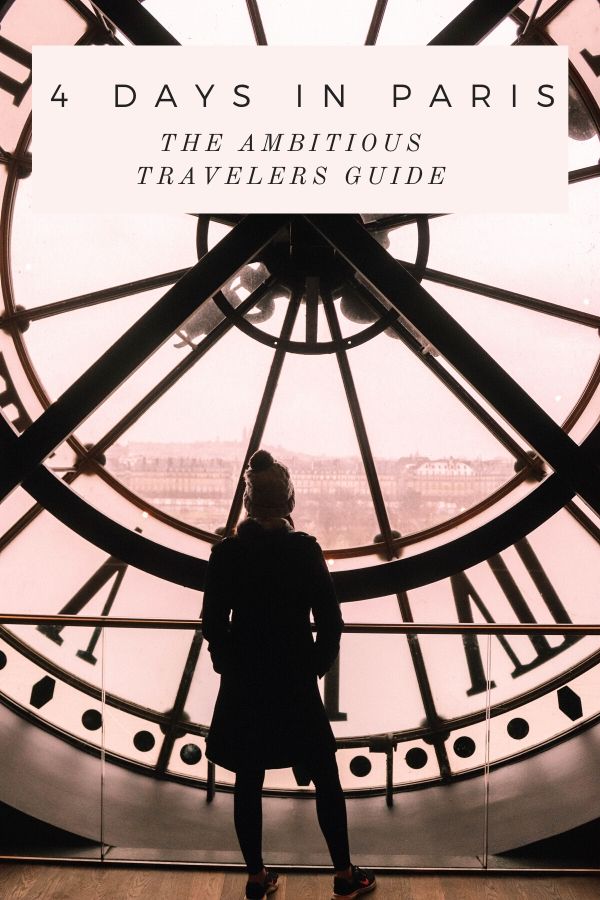
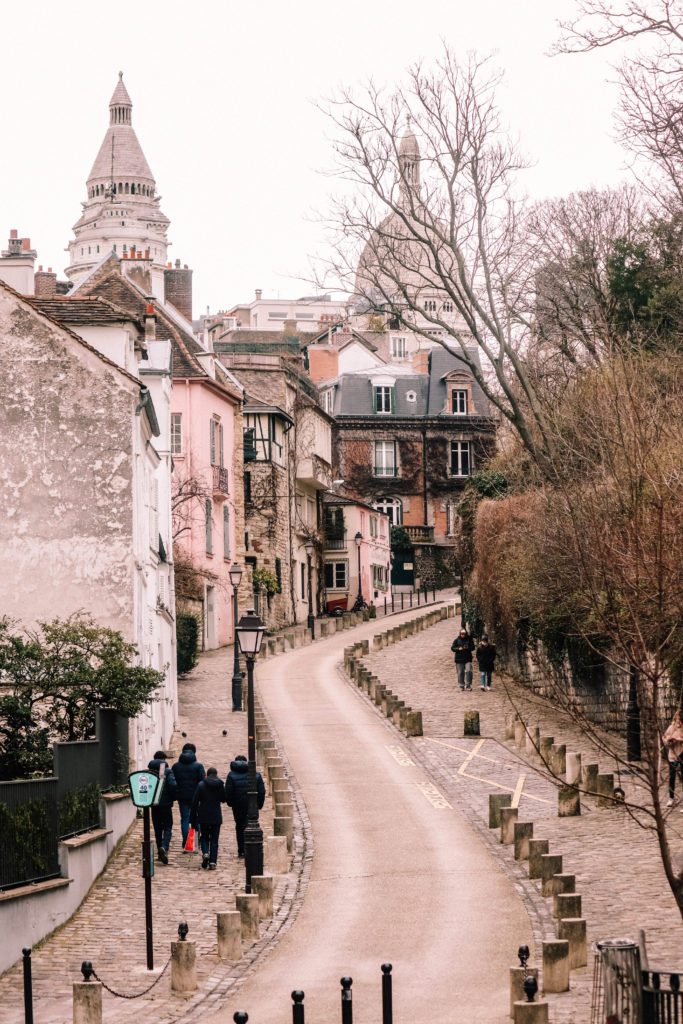
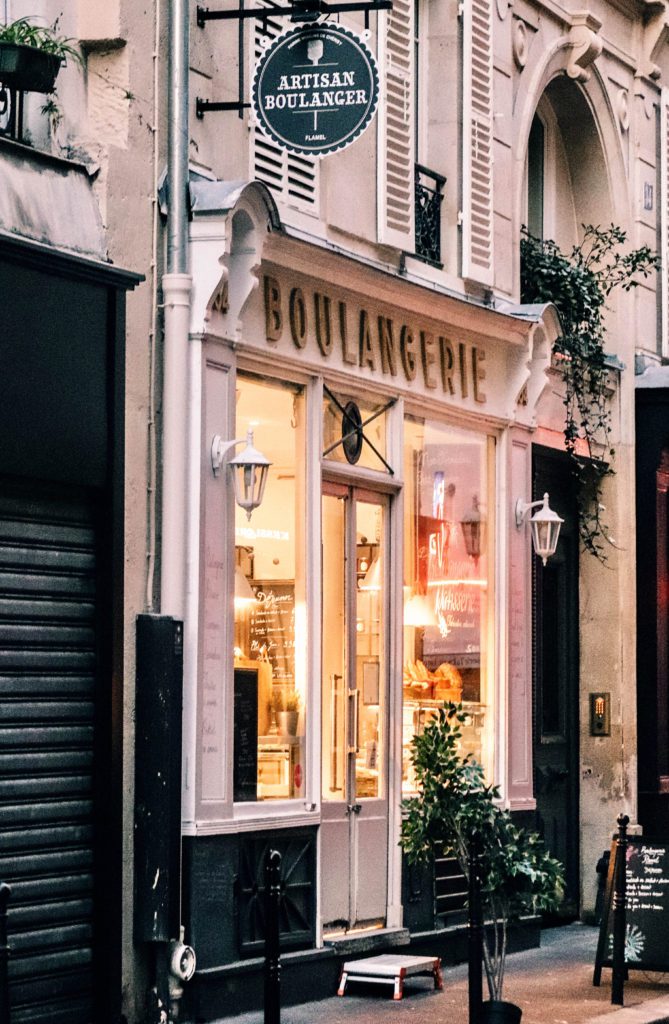

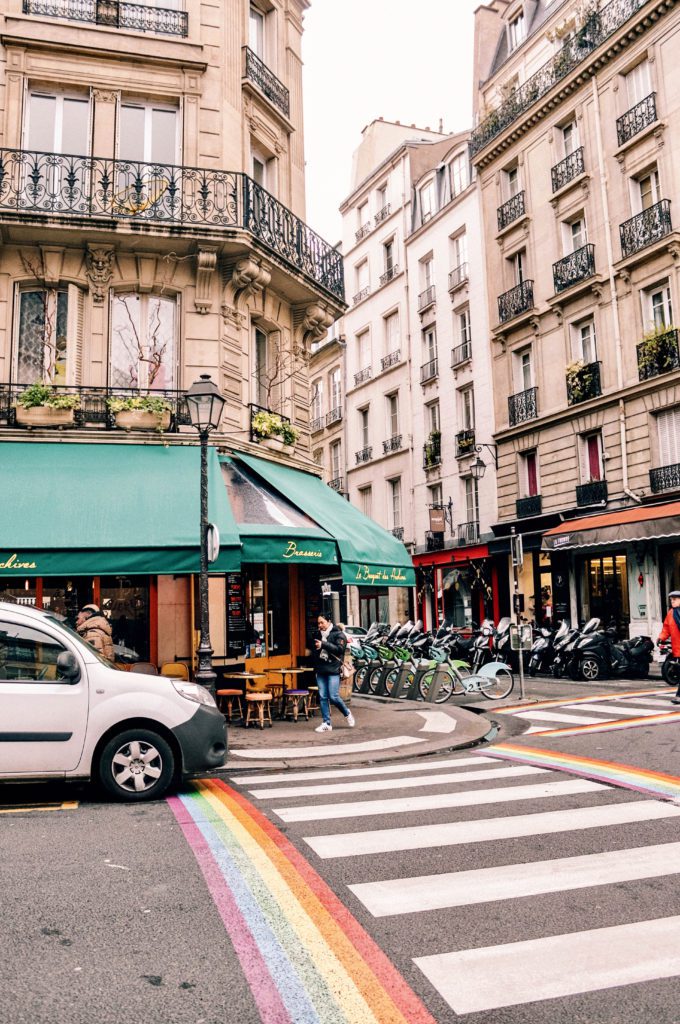

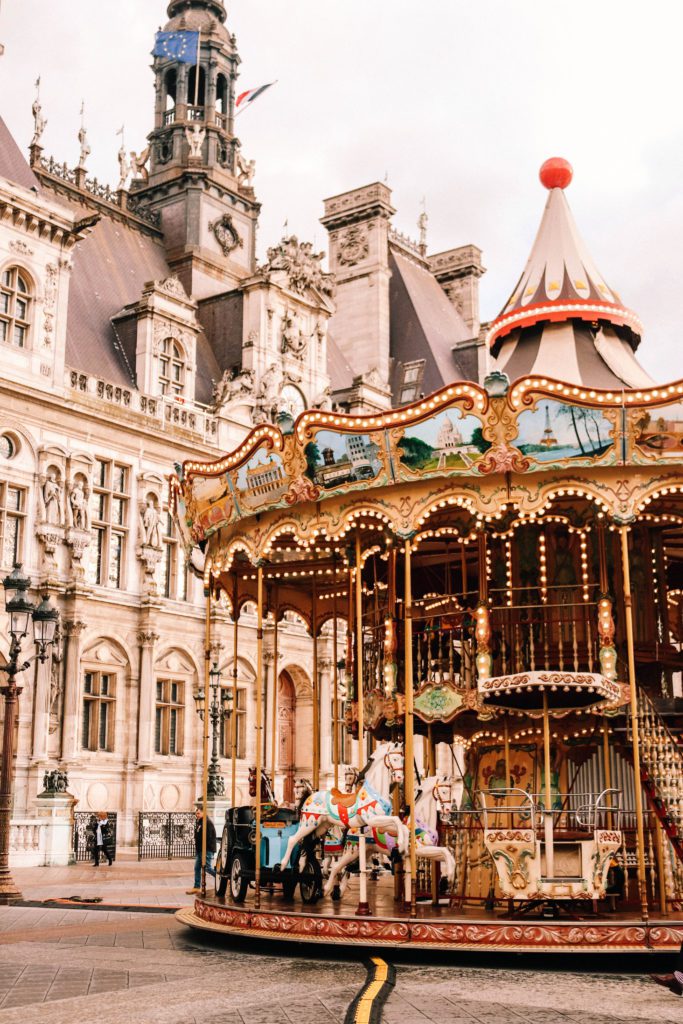

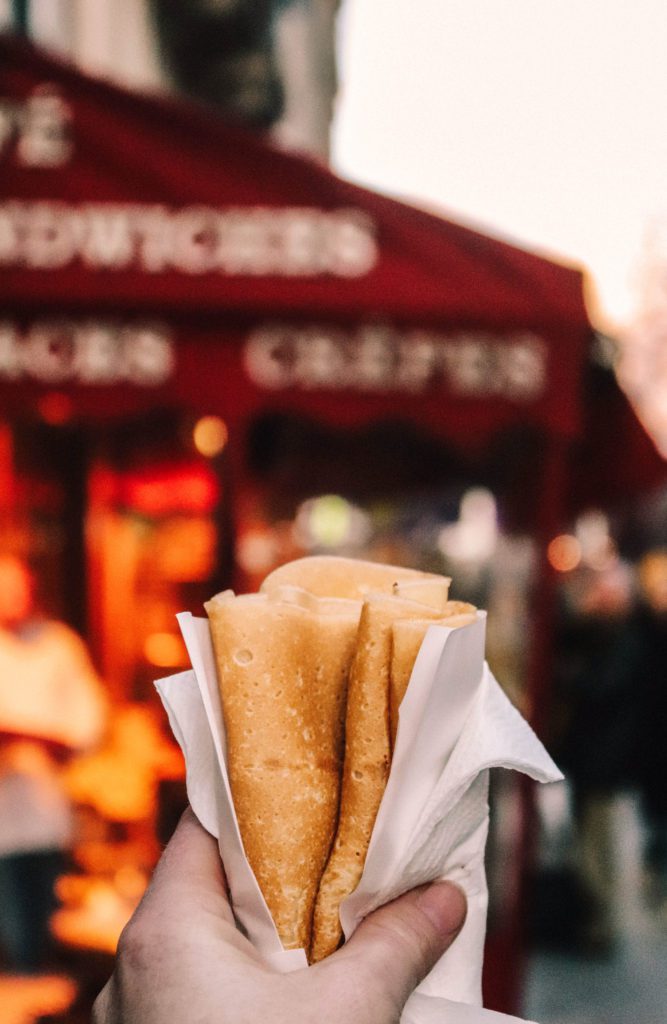

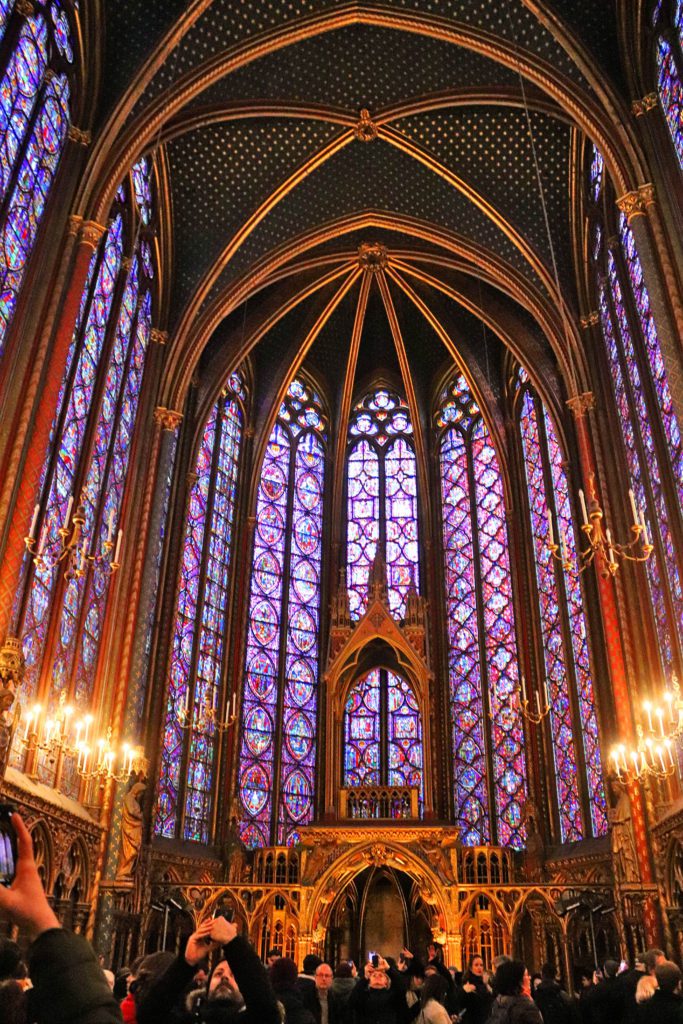
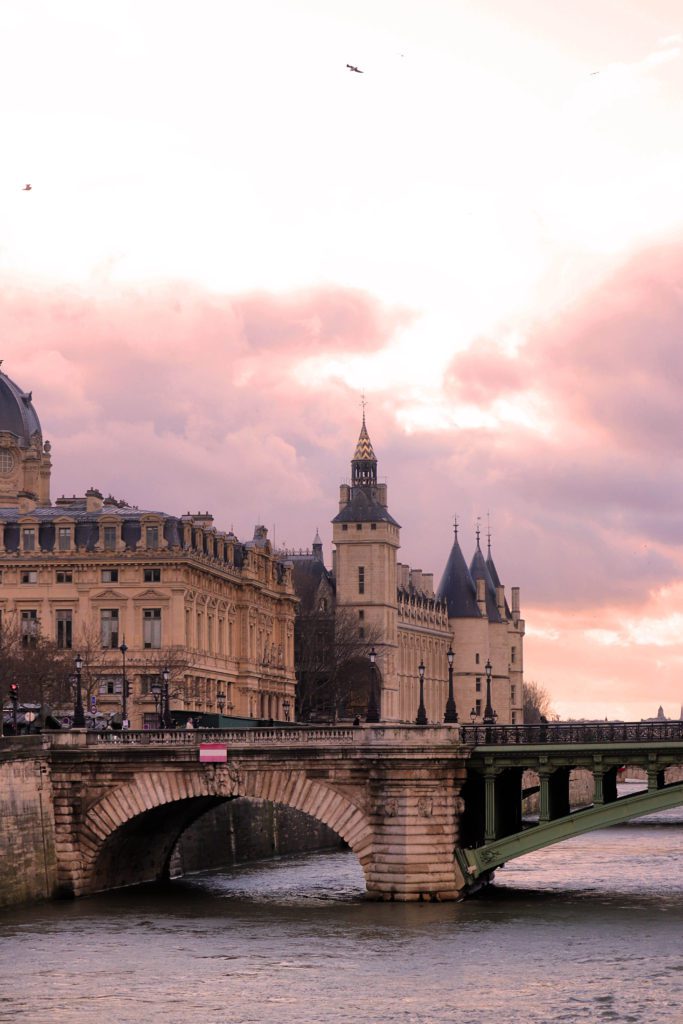
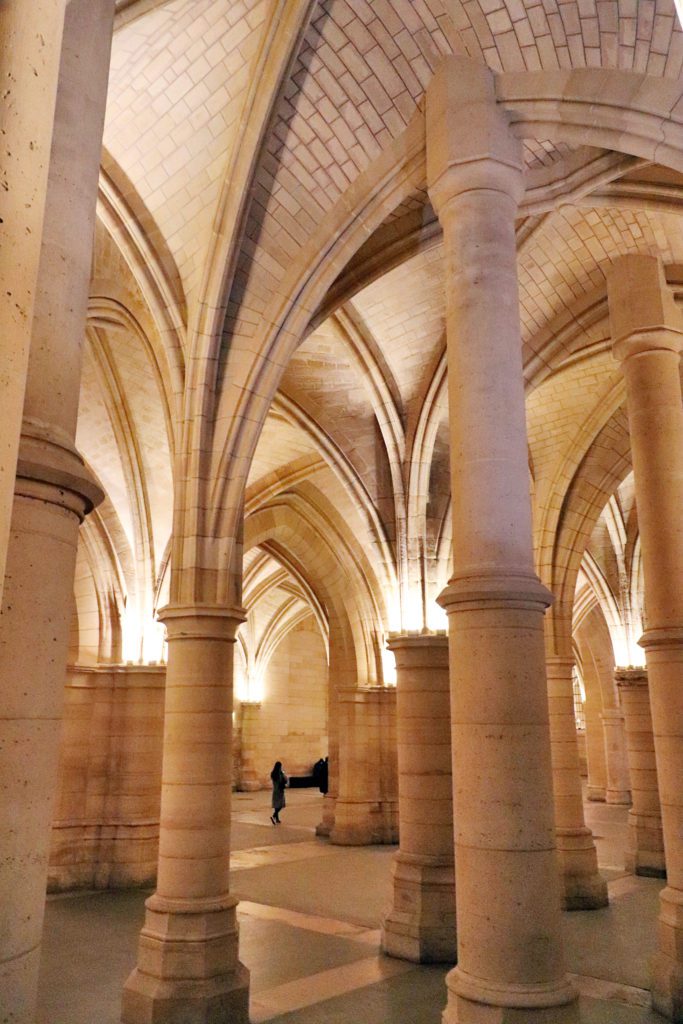
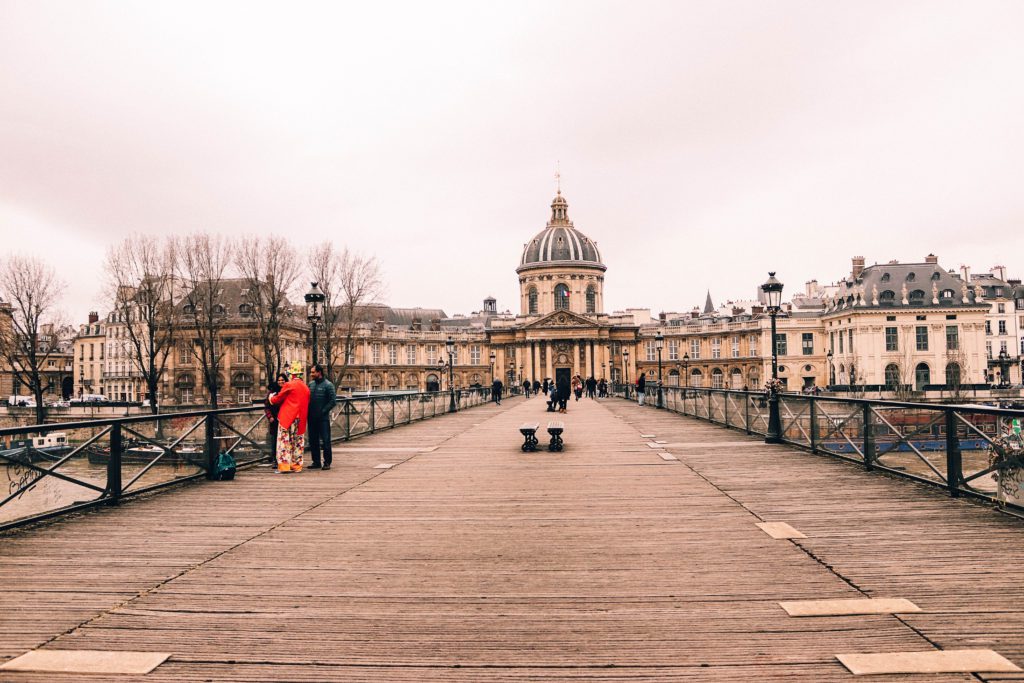
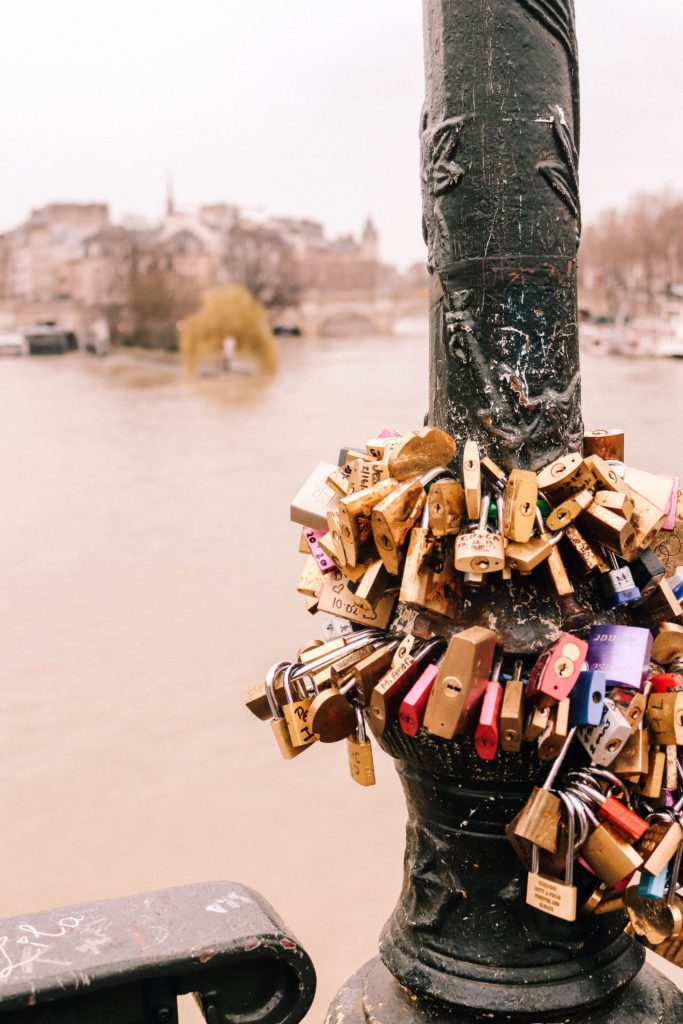
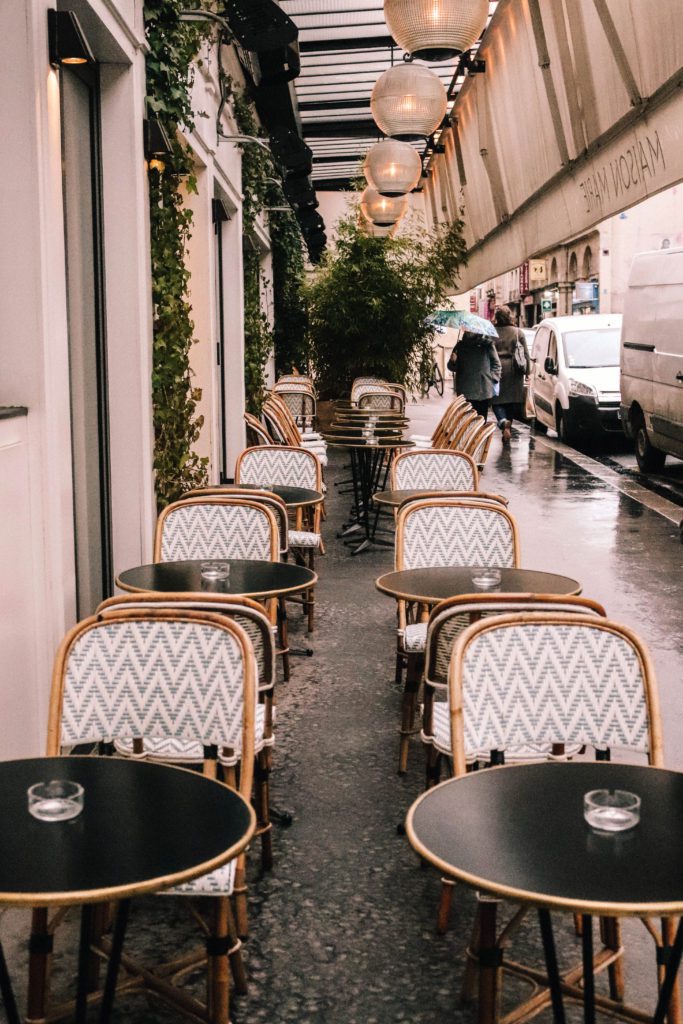
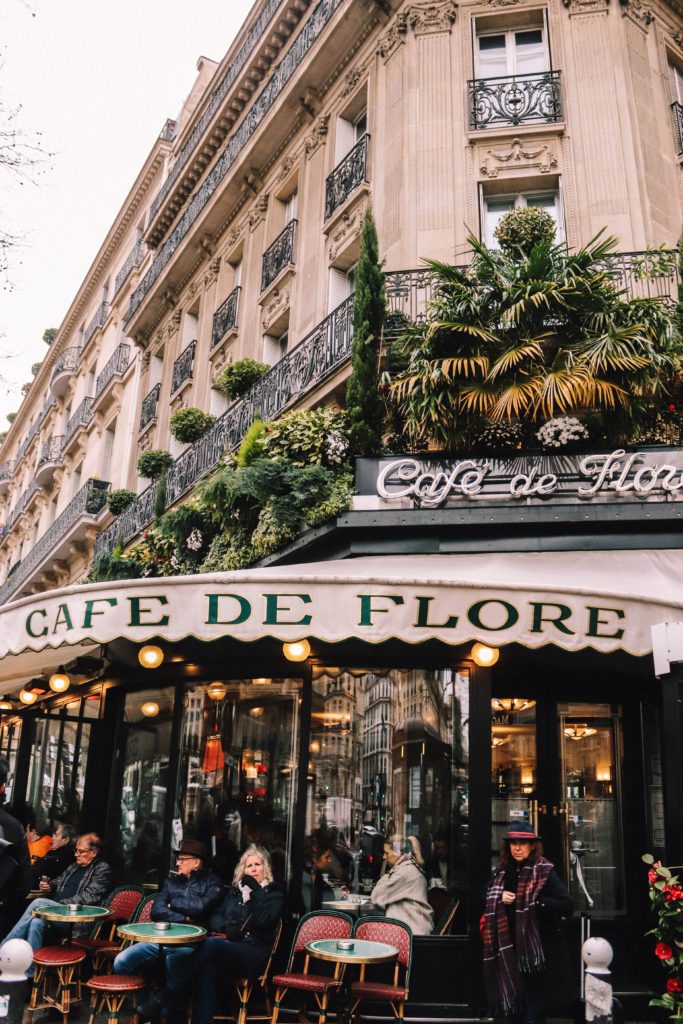
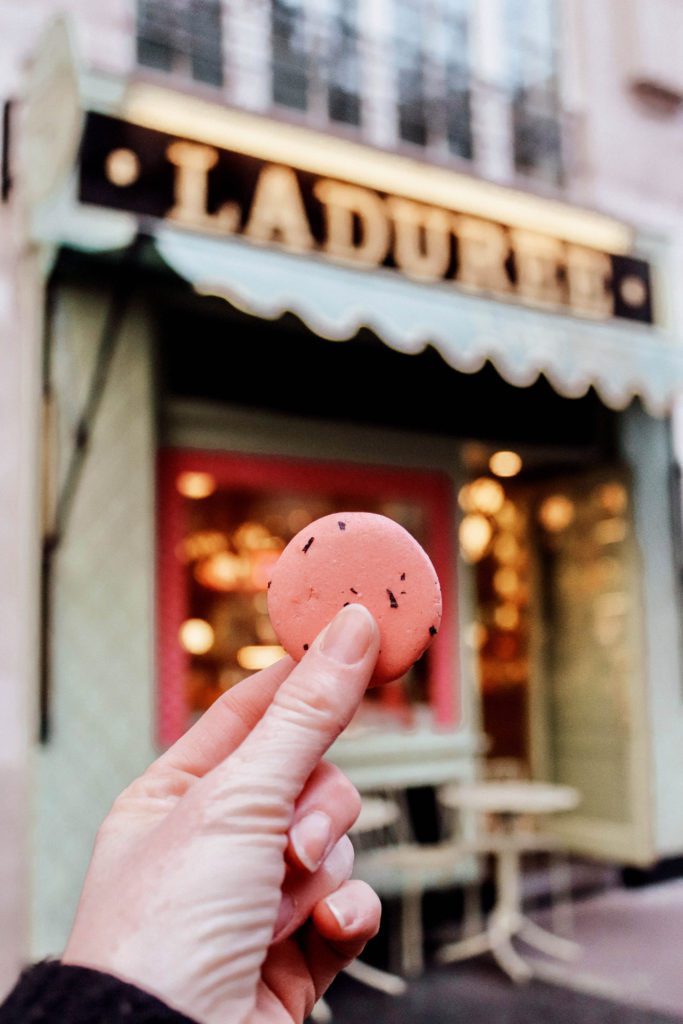
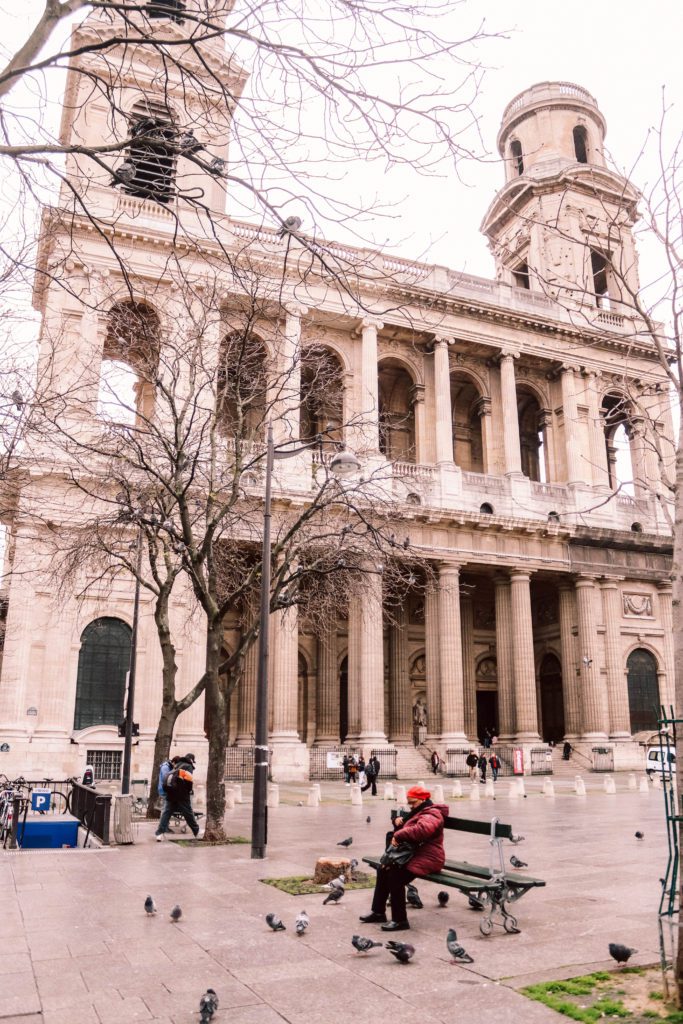

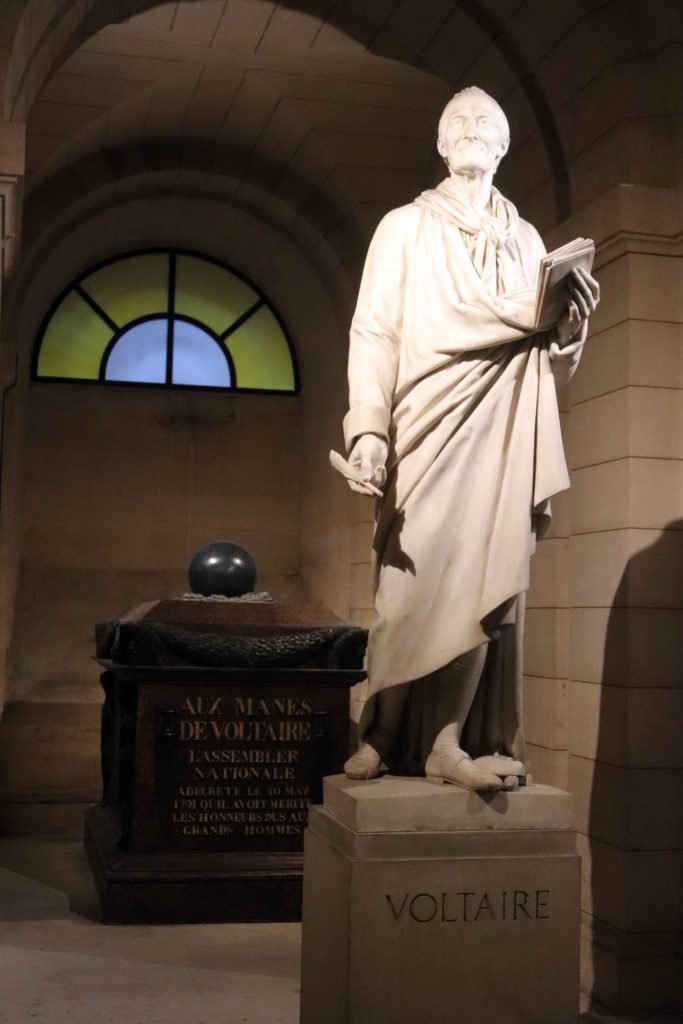
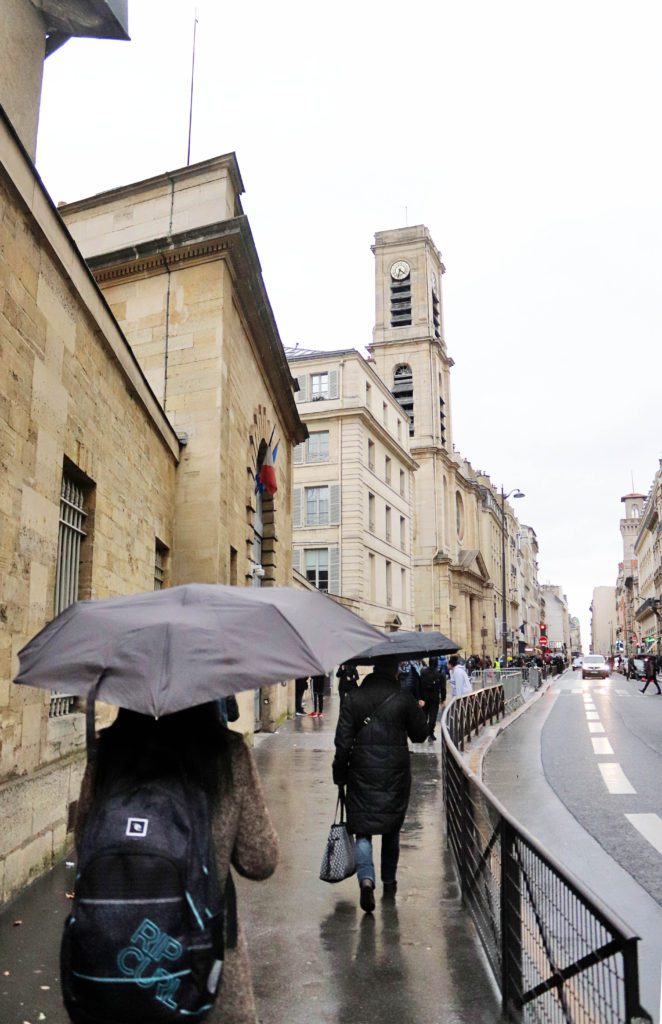
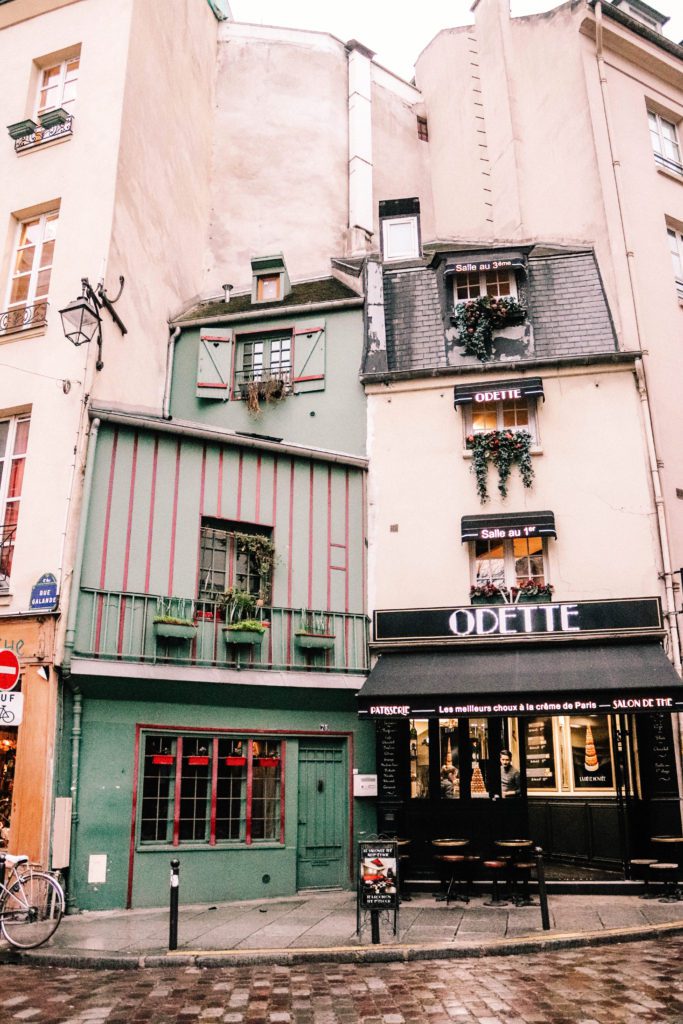
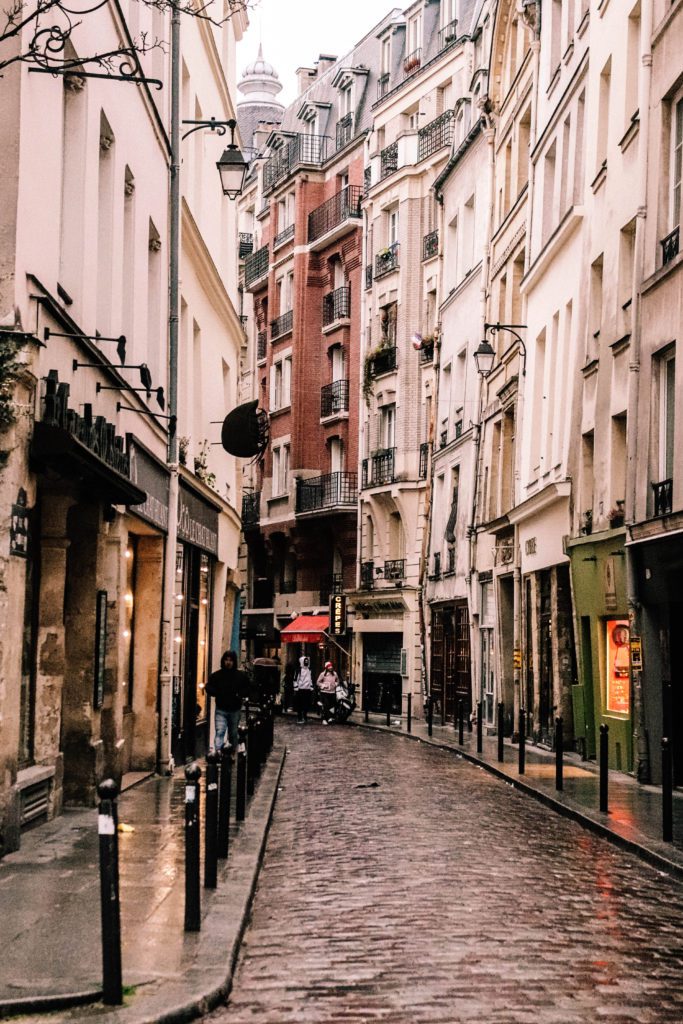
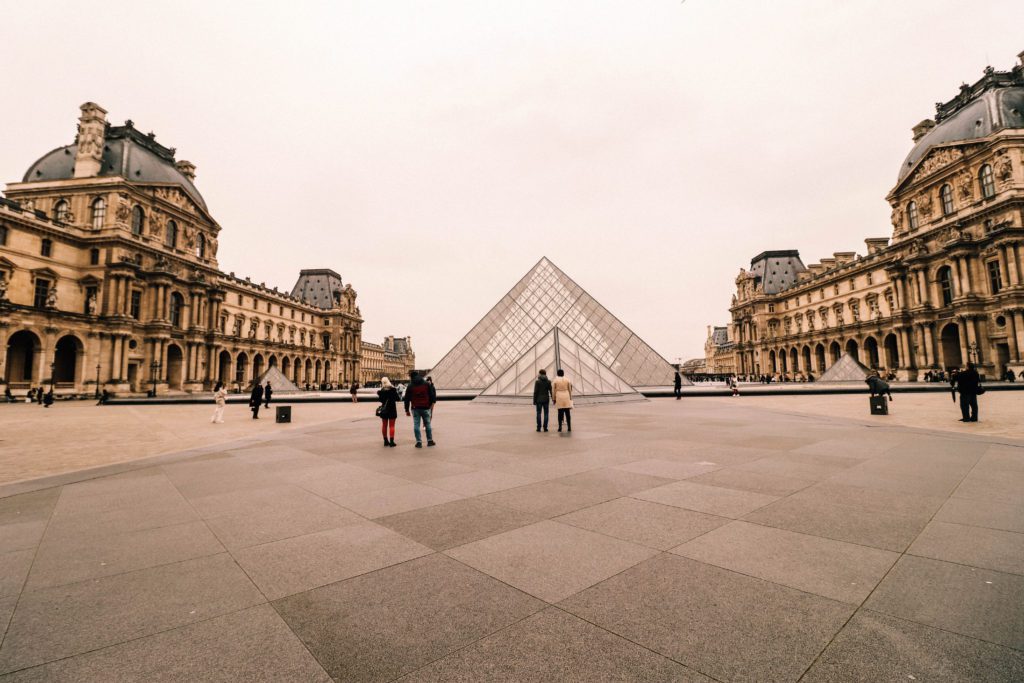
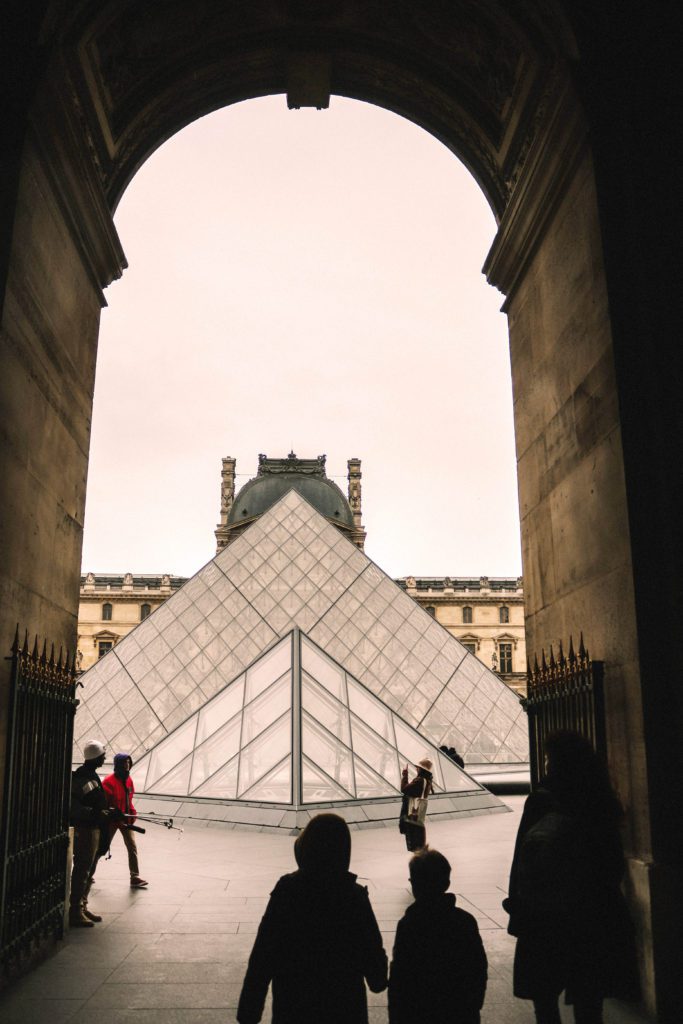



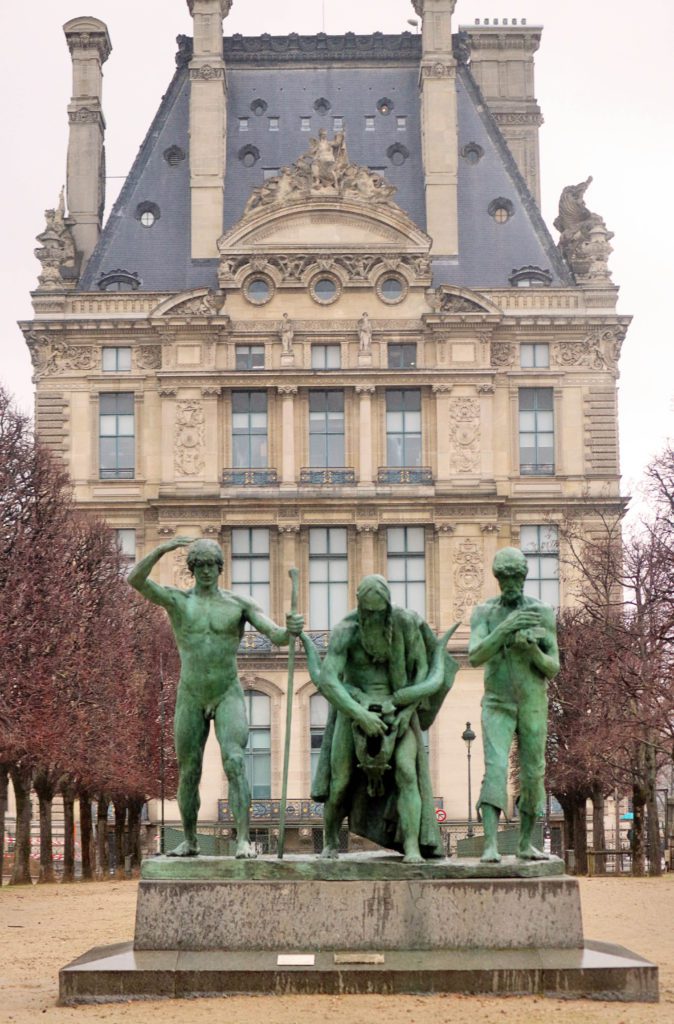
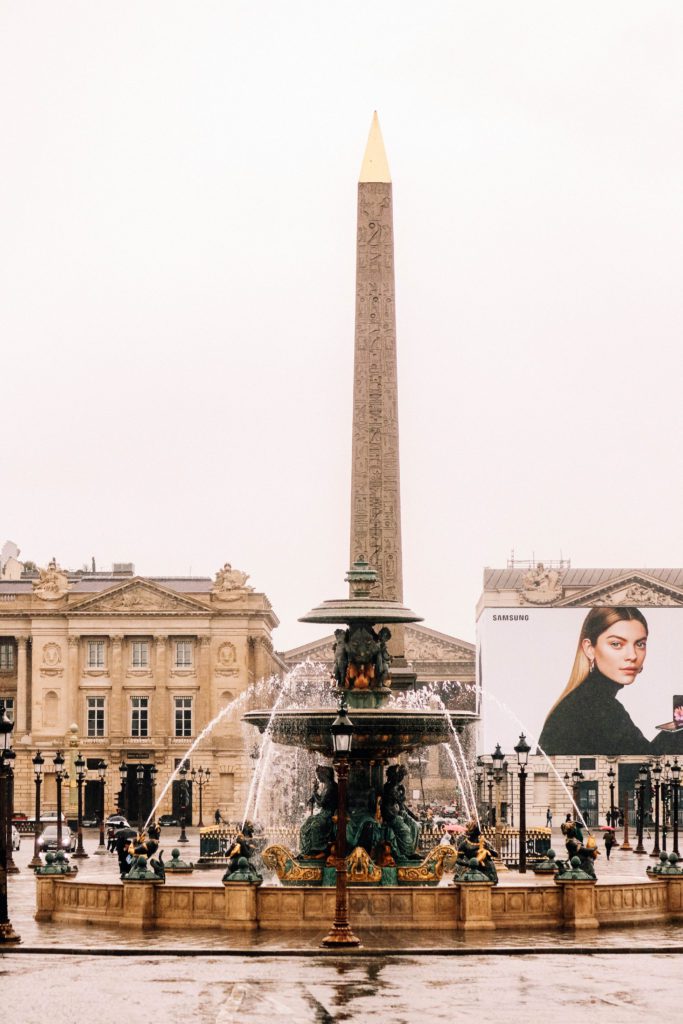
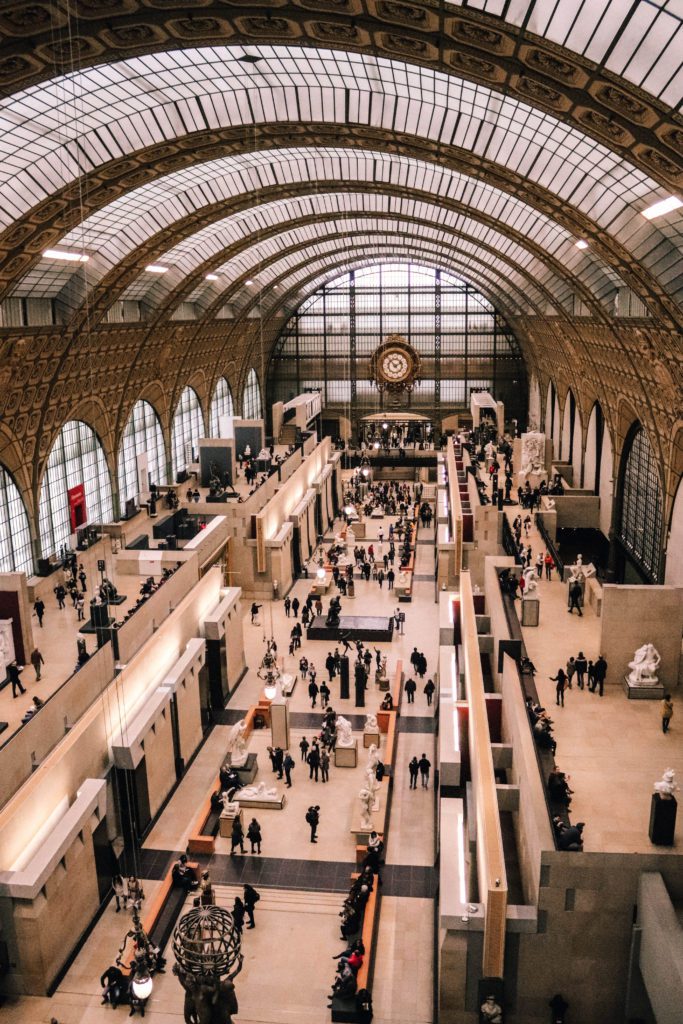
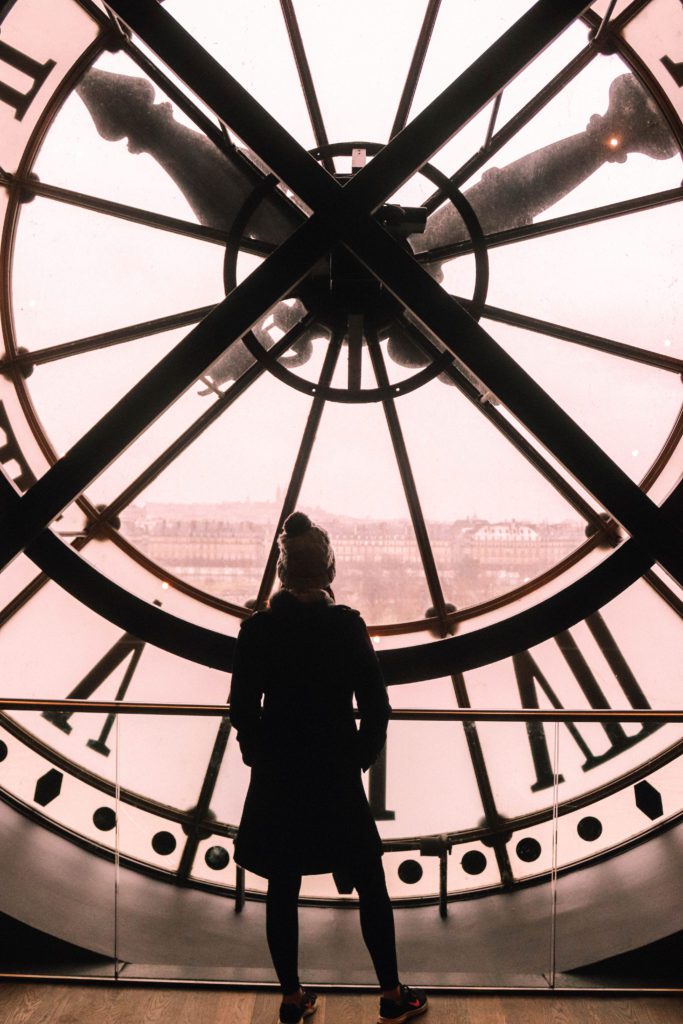
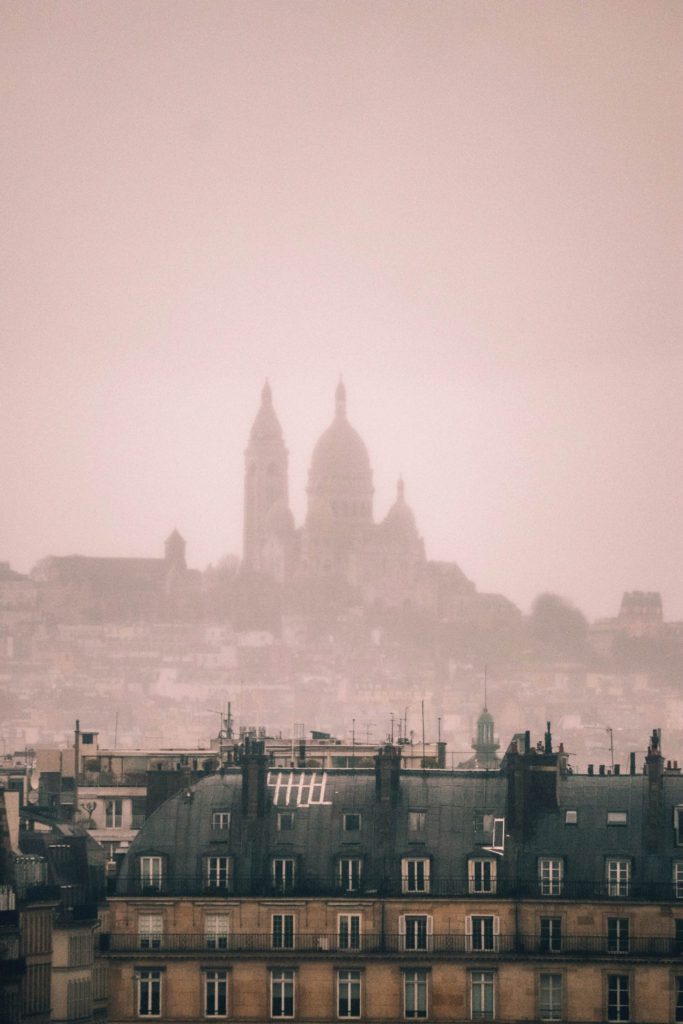
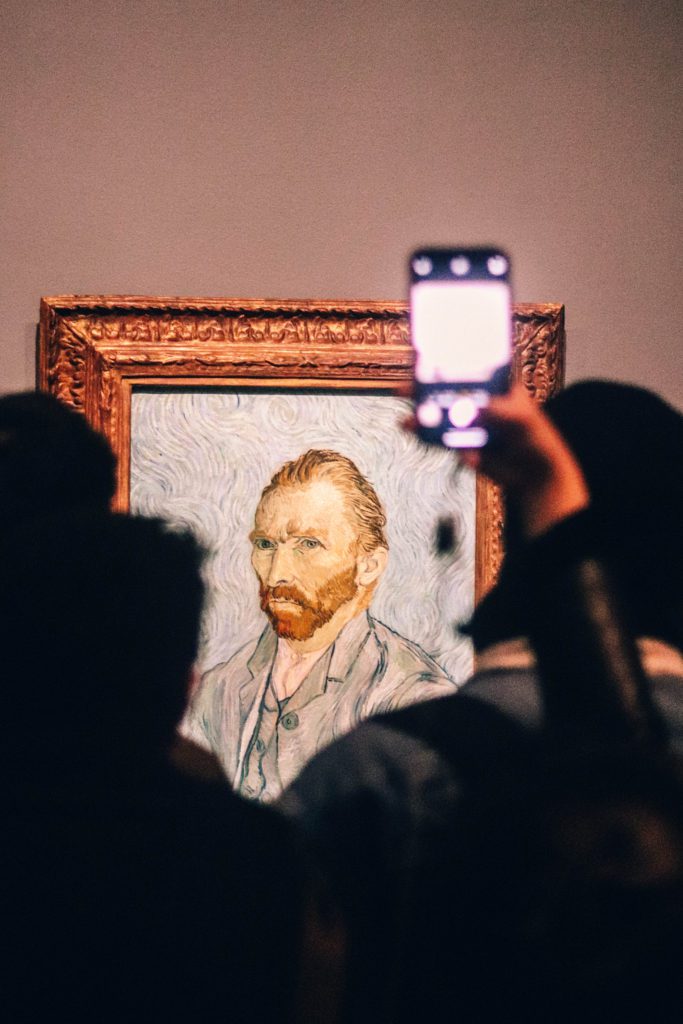
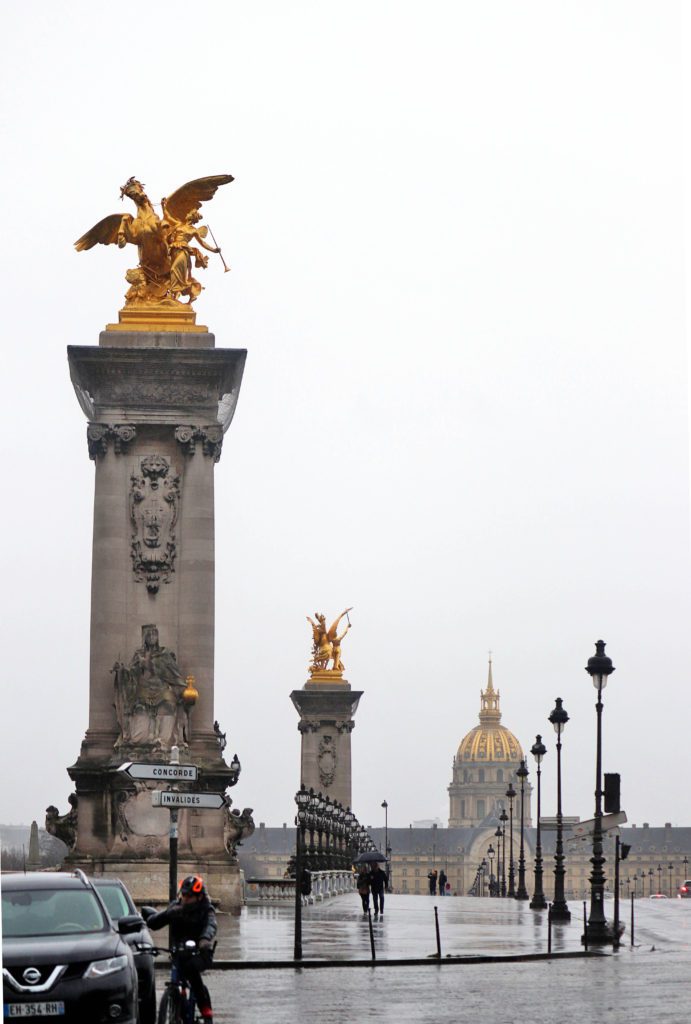
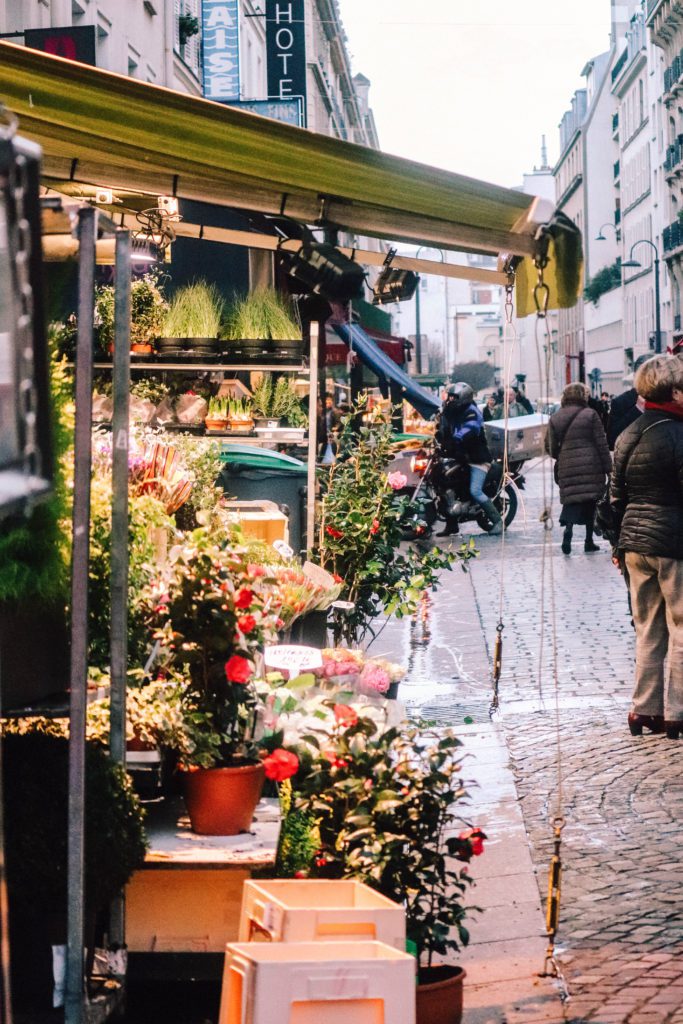
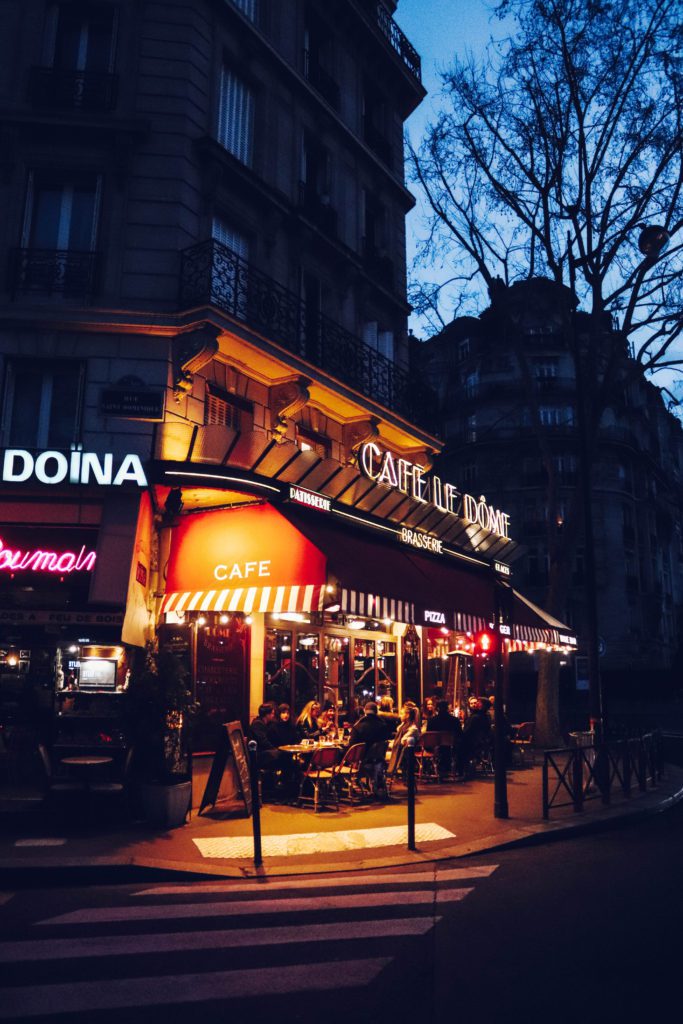
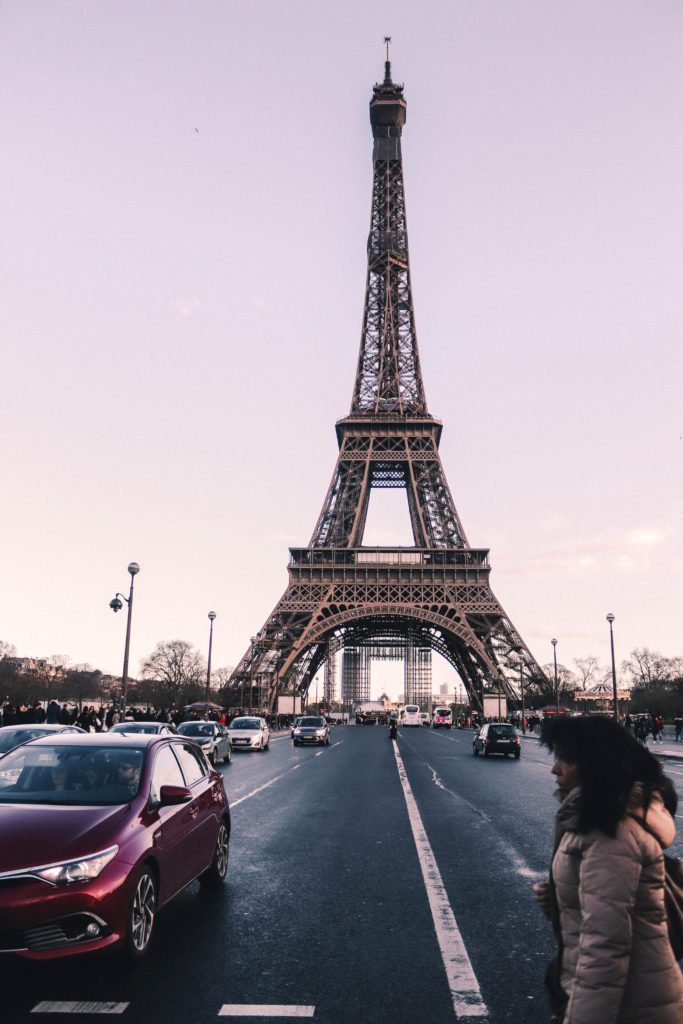
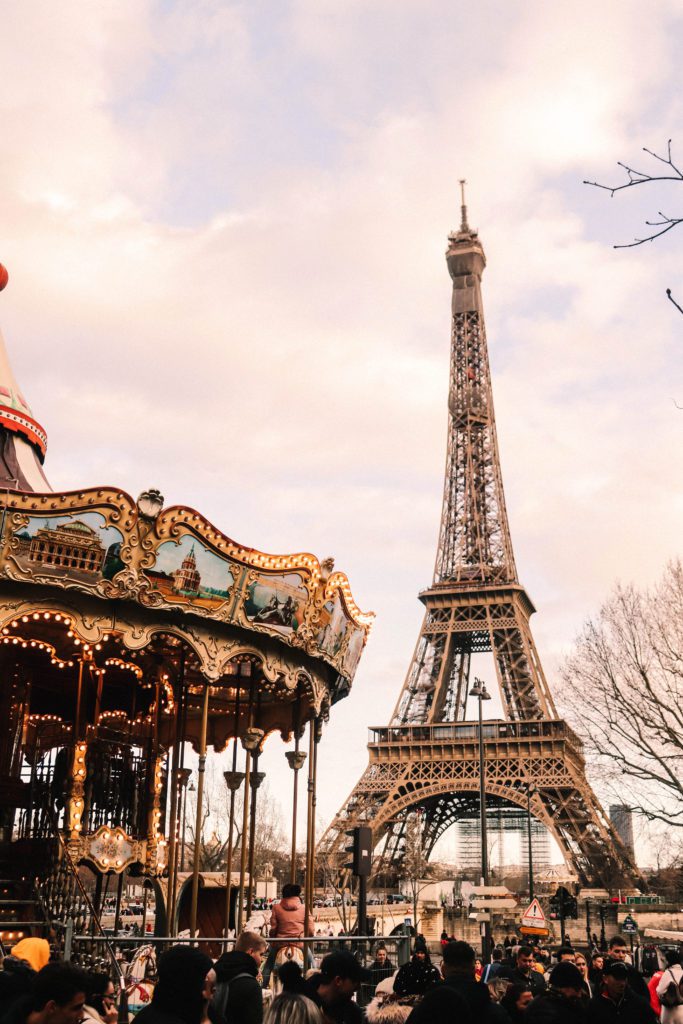

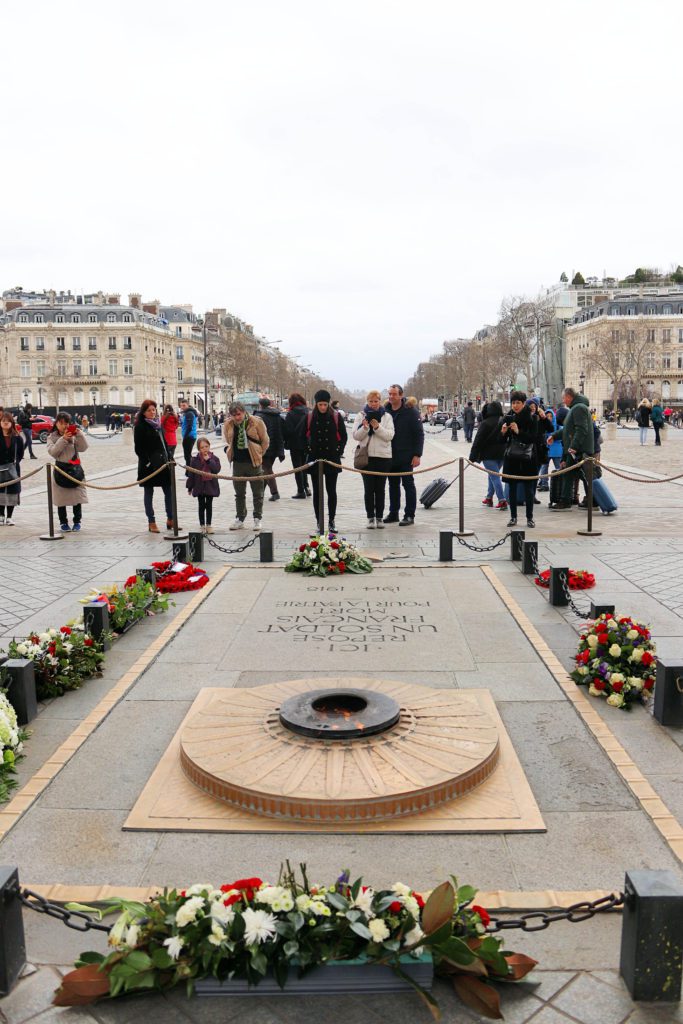
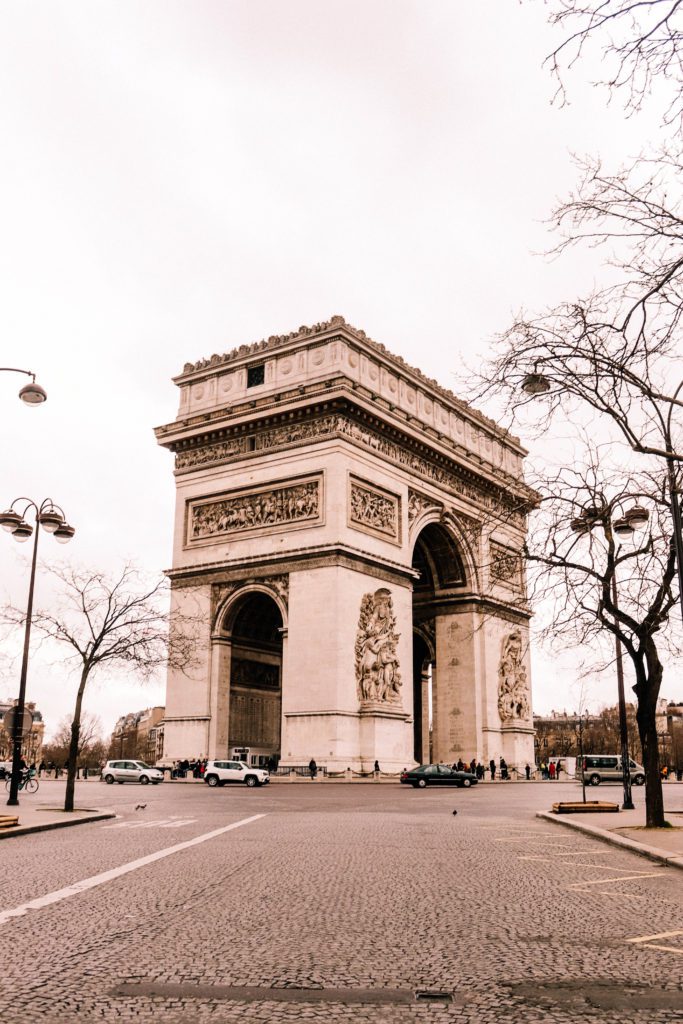
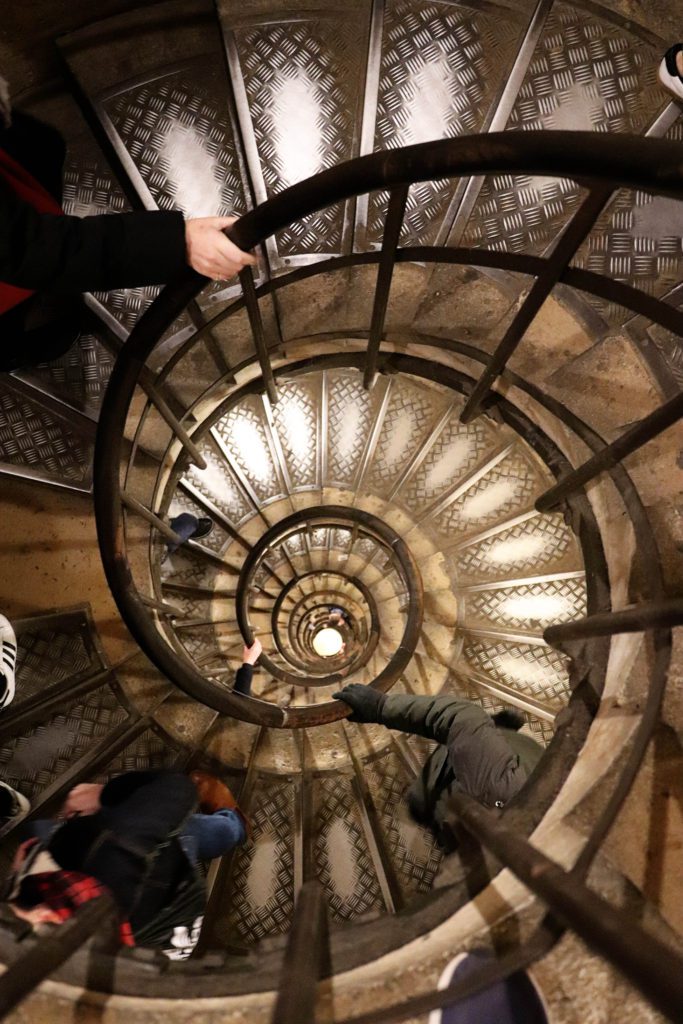

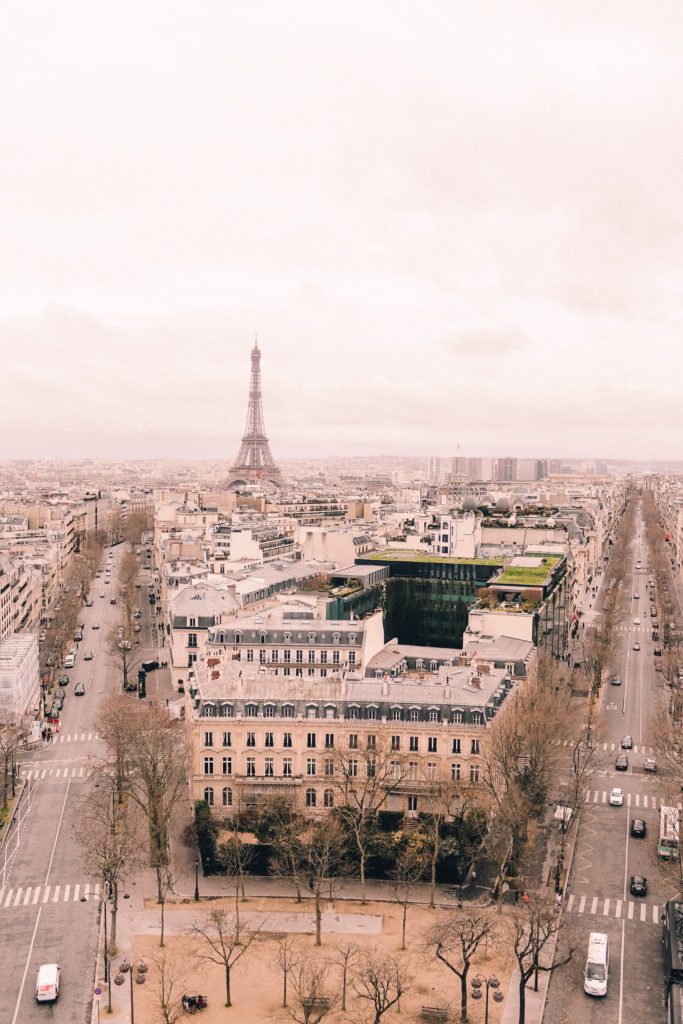
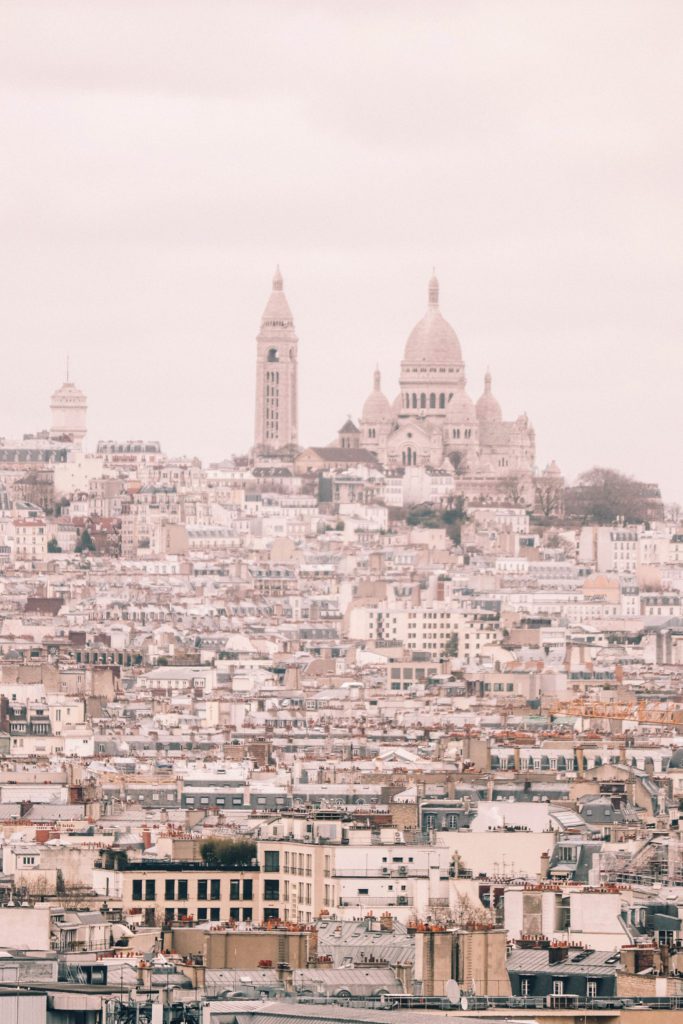
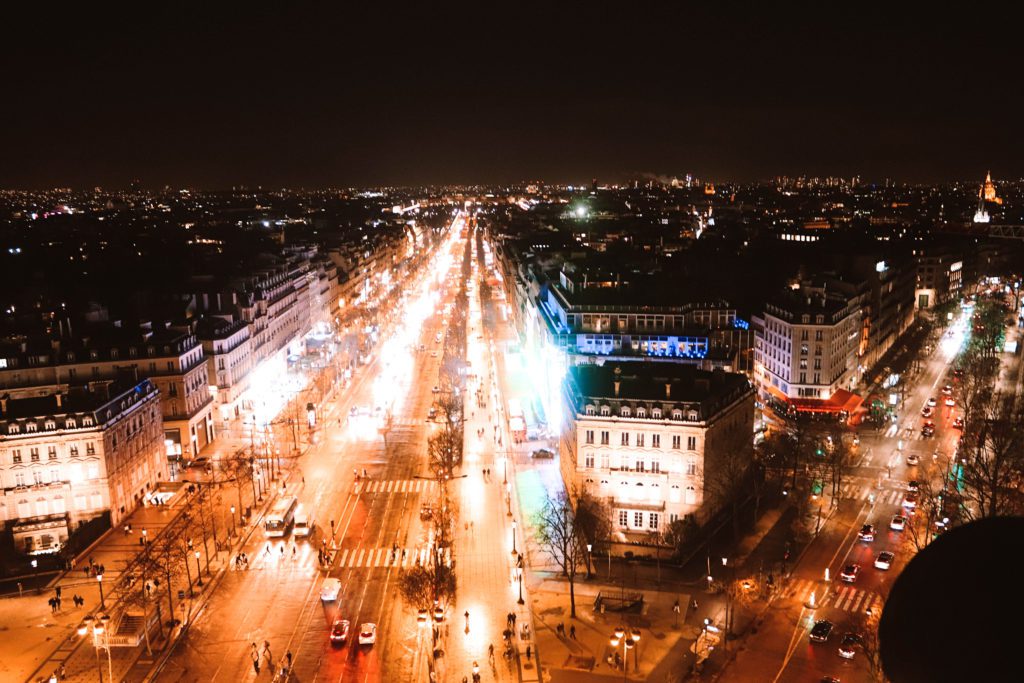
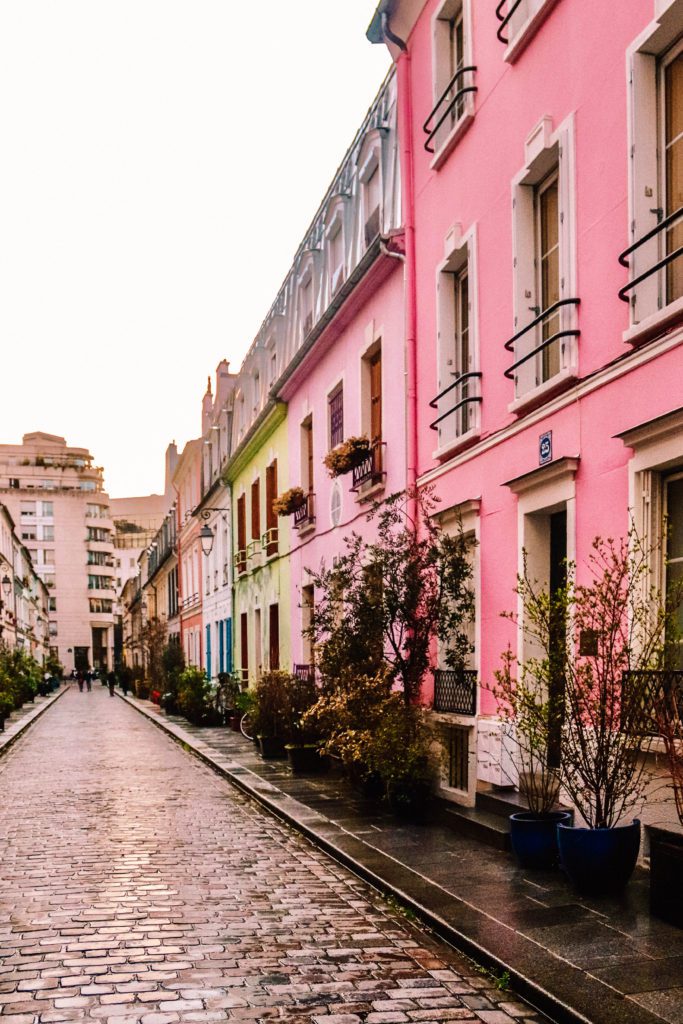
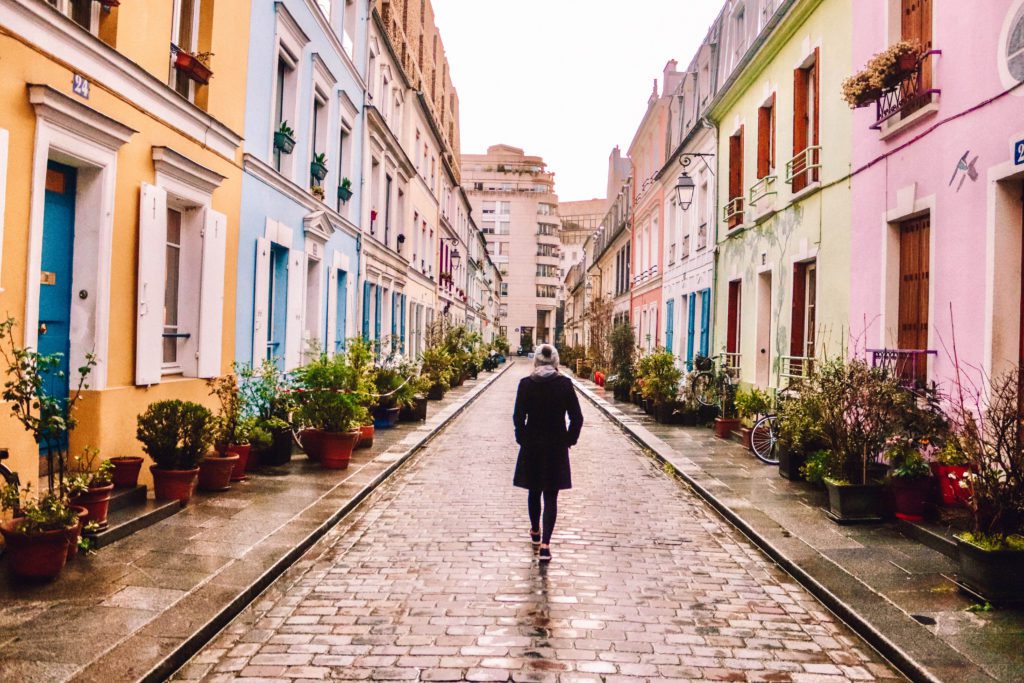
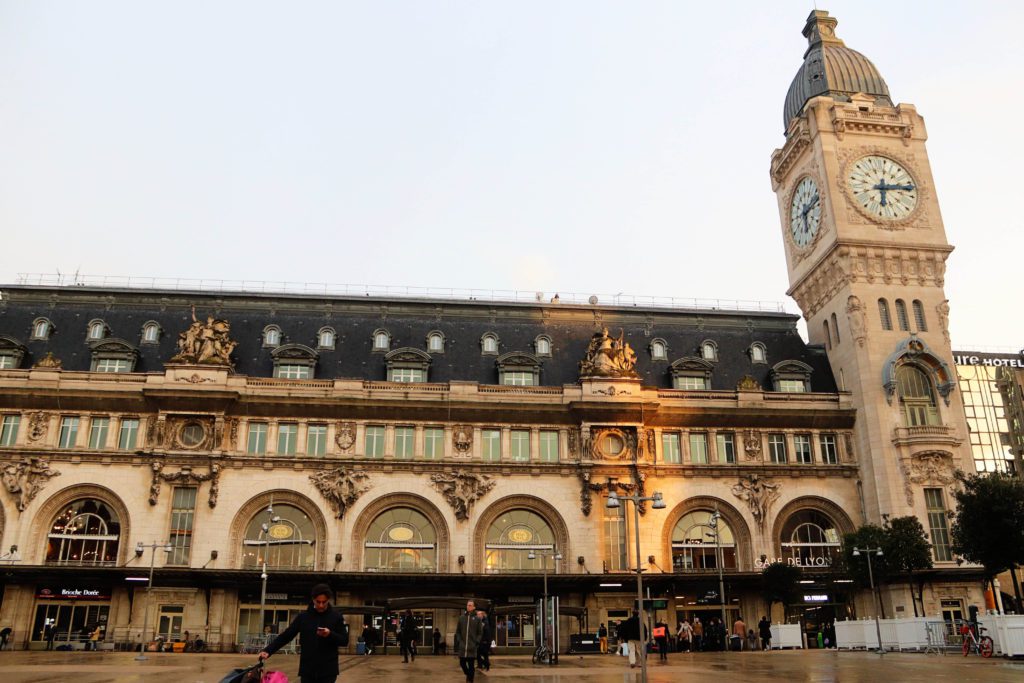
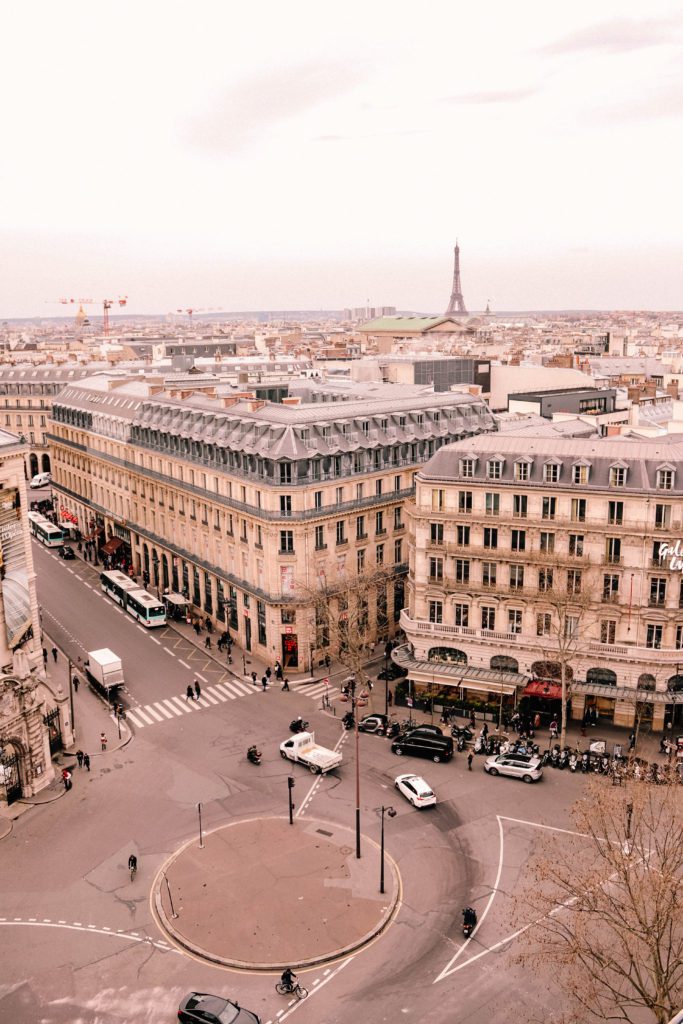

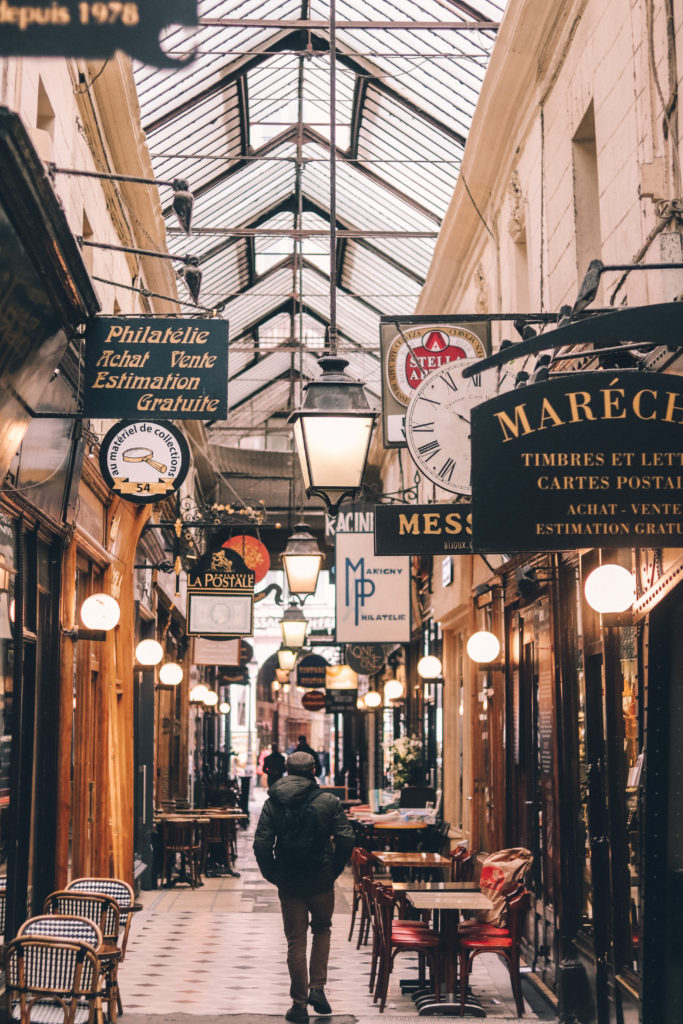
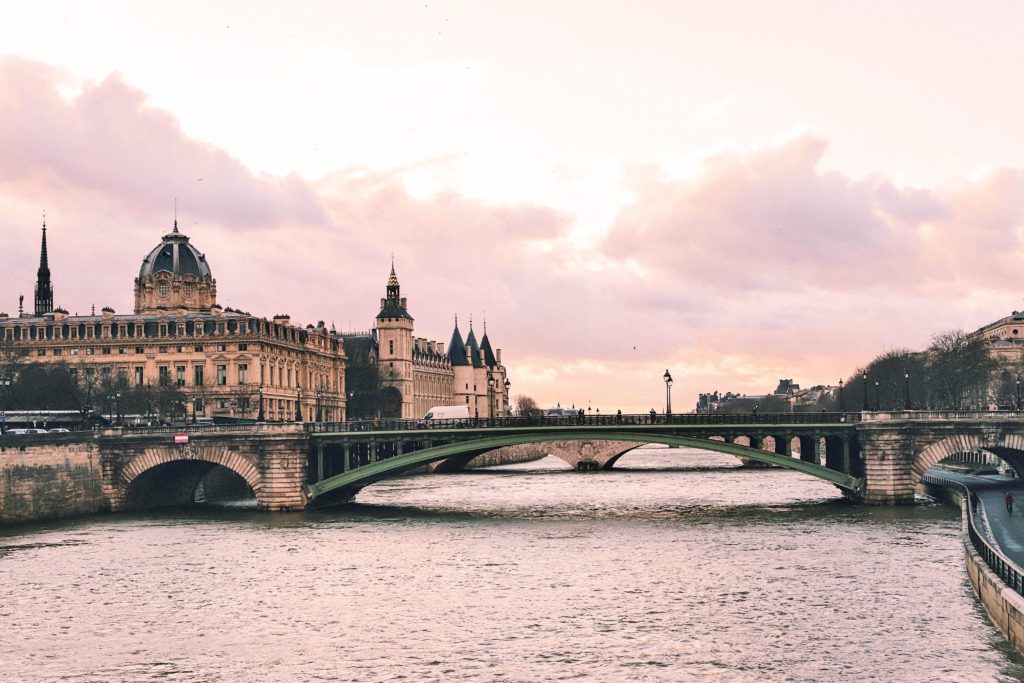
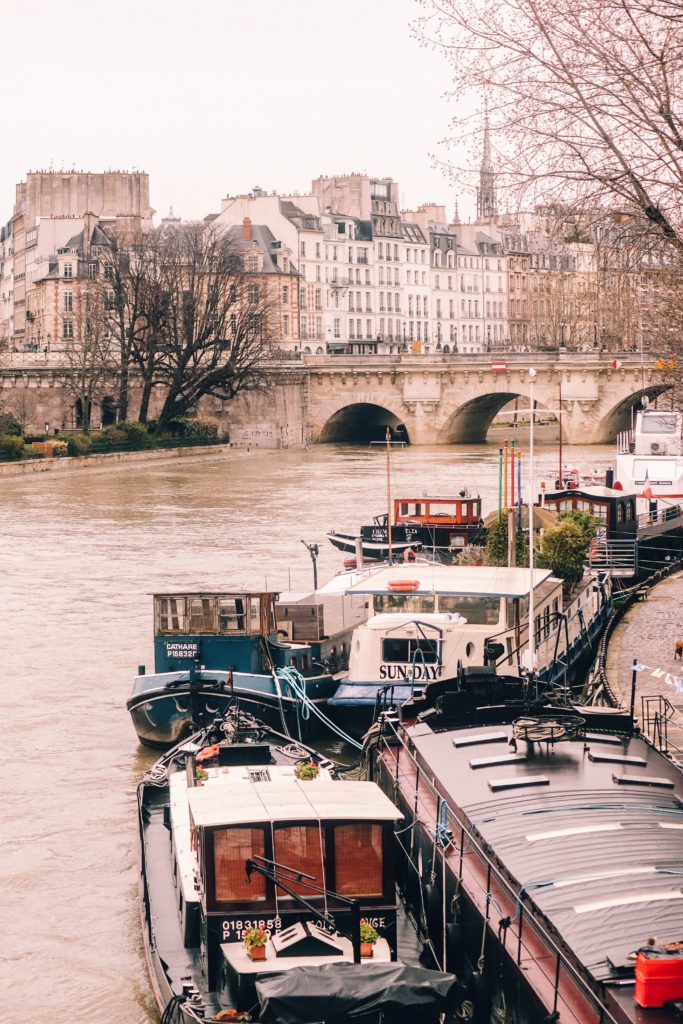



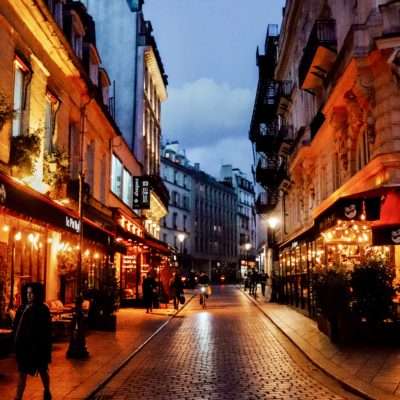
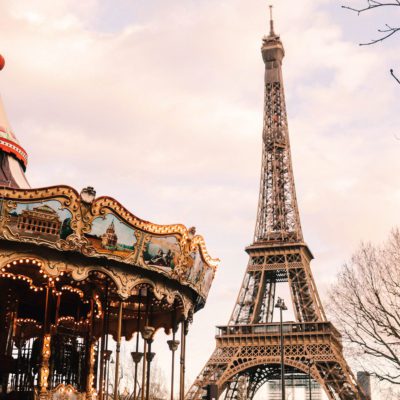
[…] *And while you’re planning your trip to Paris, be sure to check out our guide for Paris in 4 Days: The Ambitious Traveler’s Guide […]